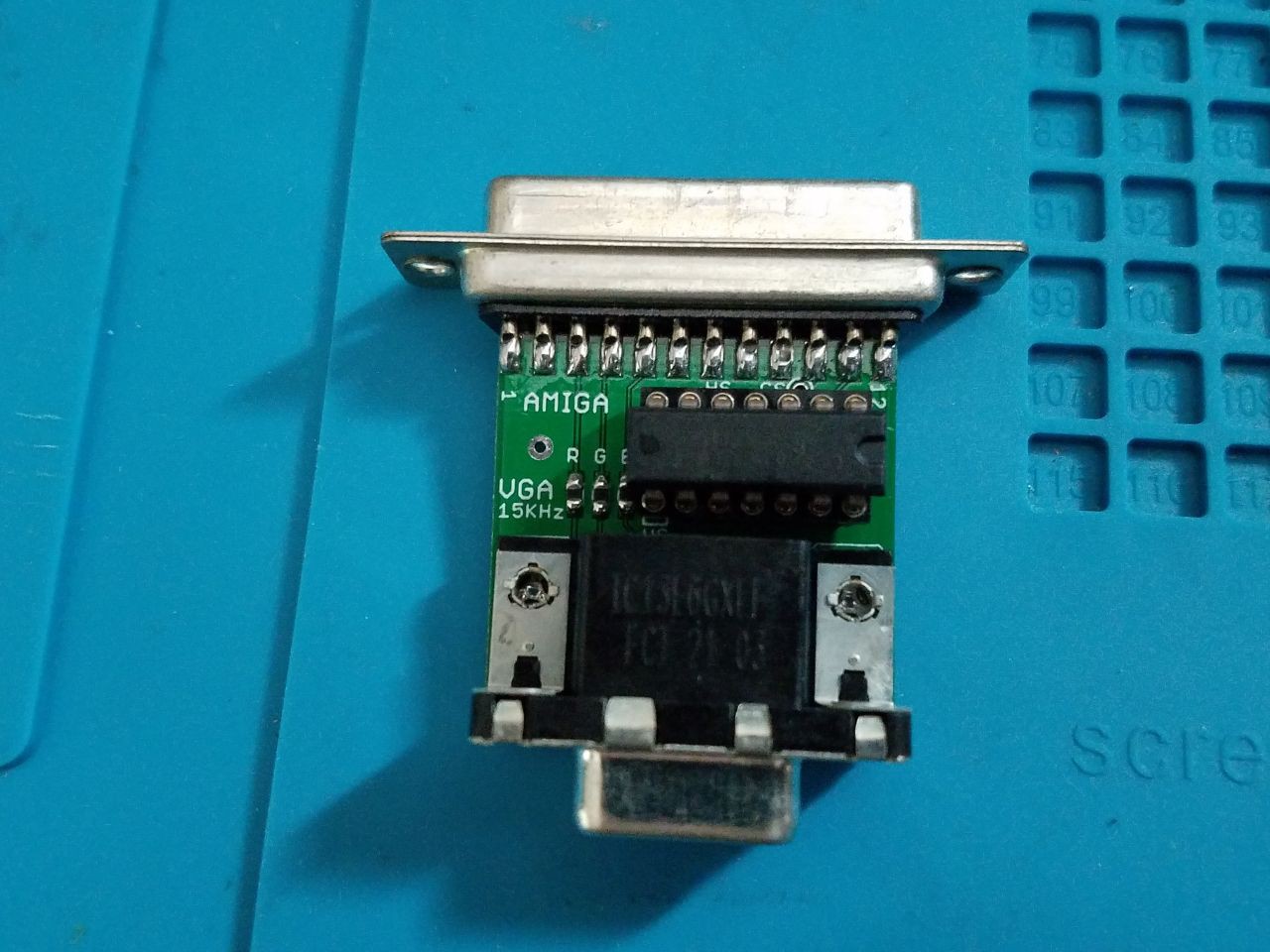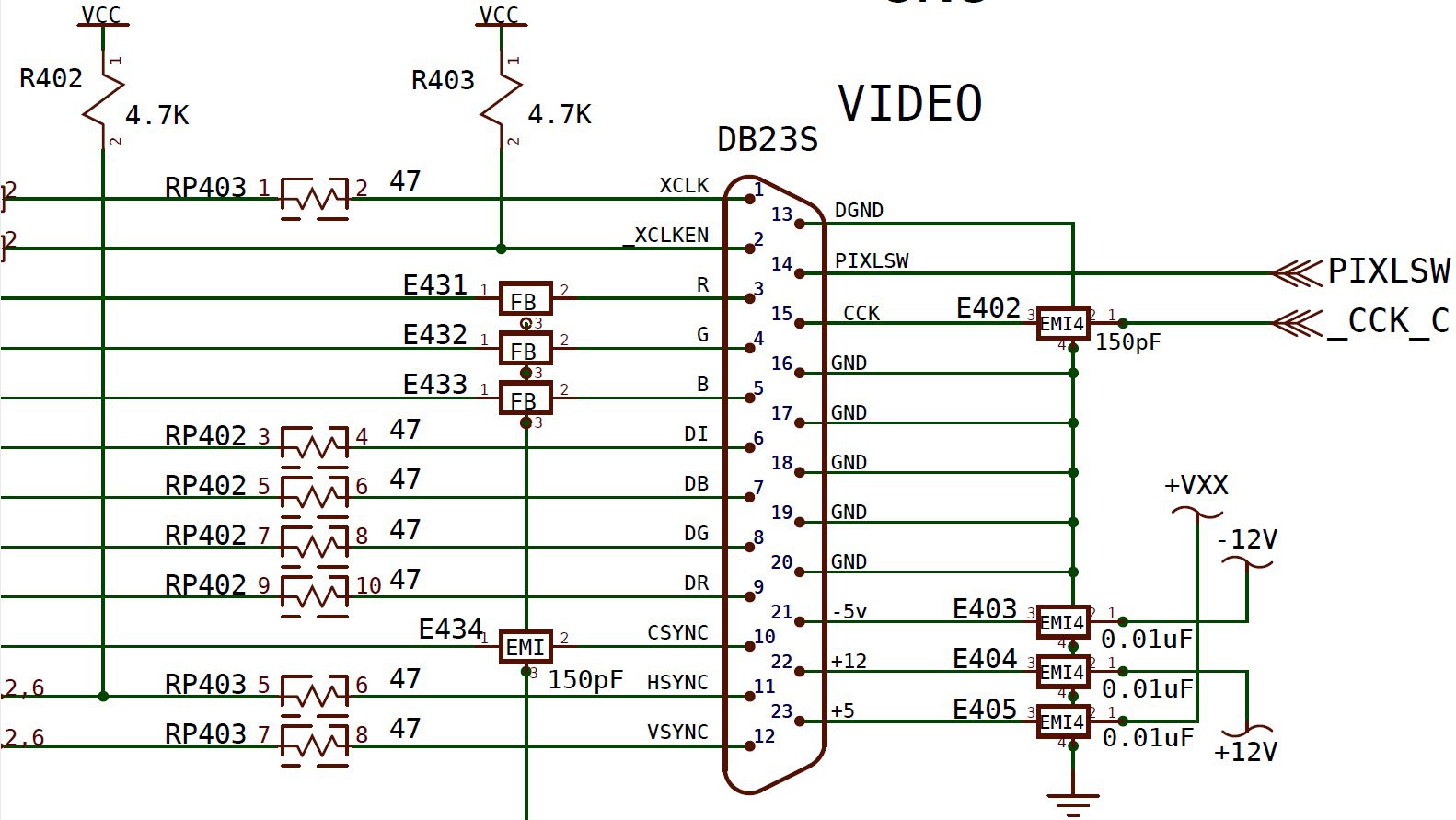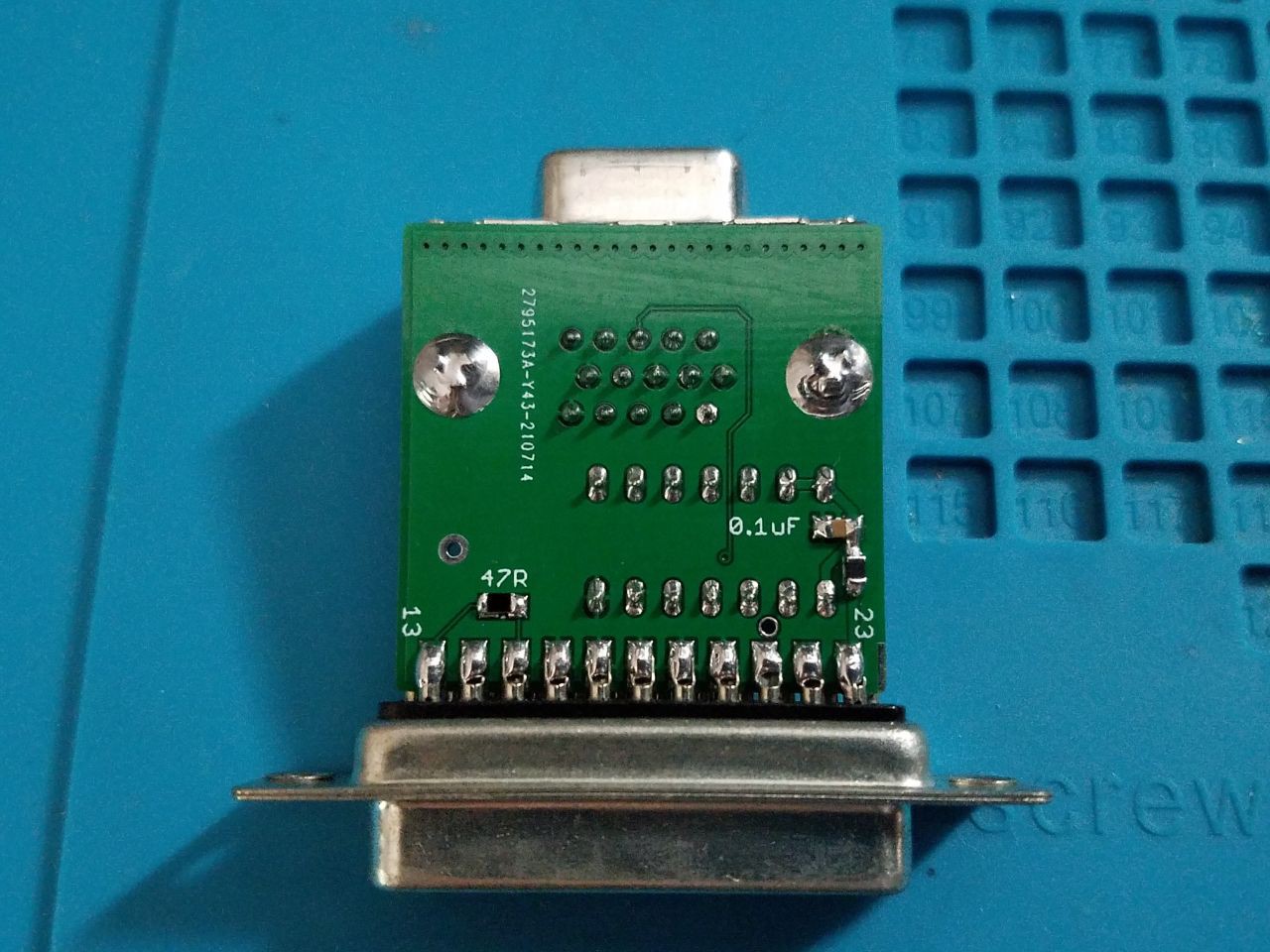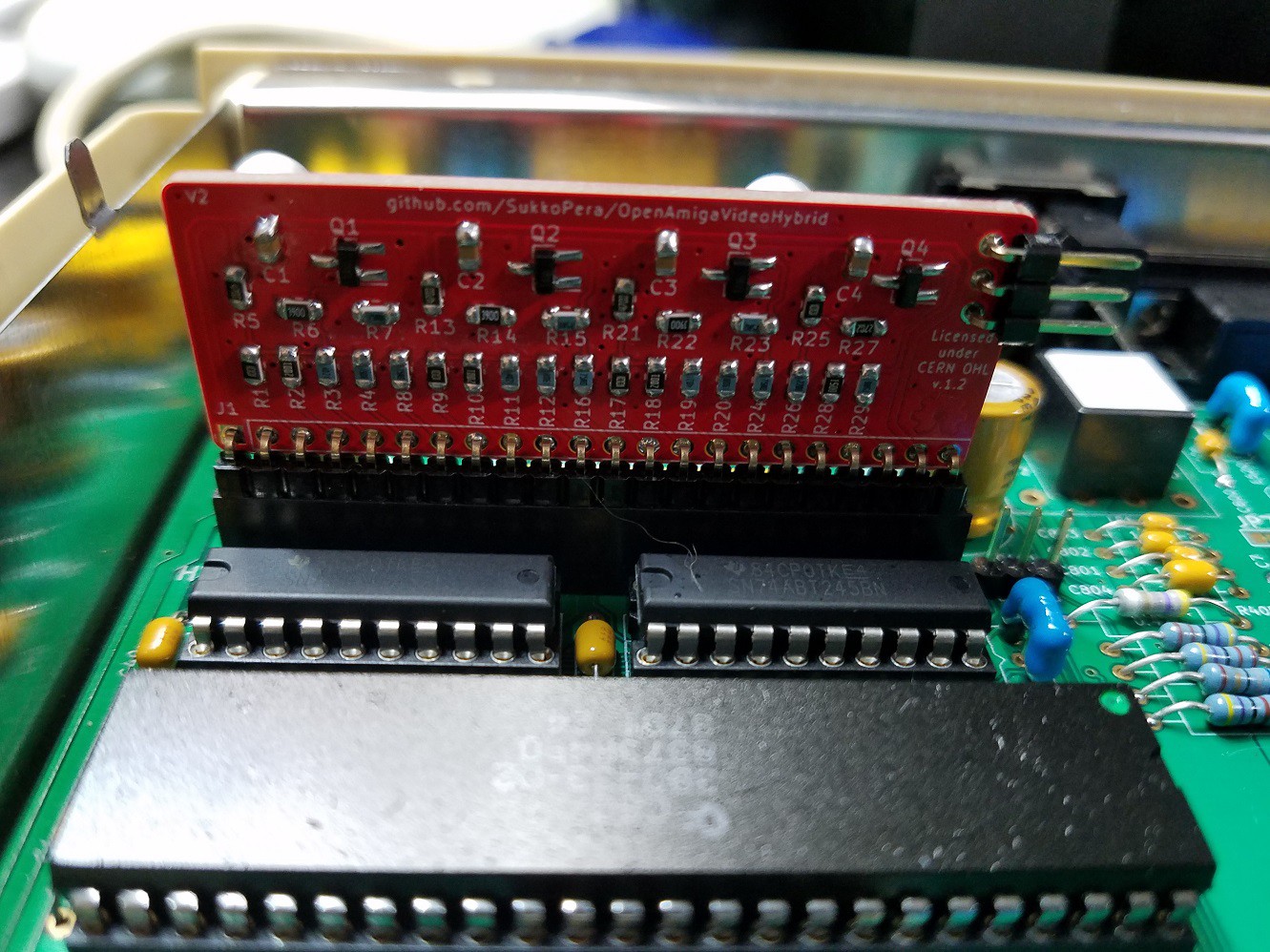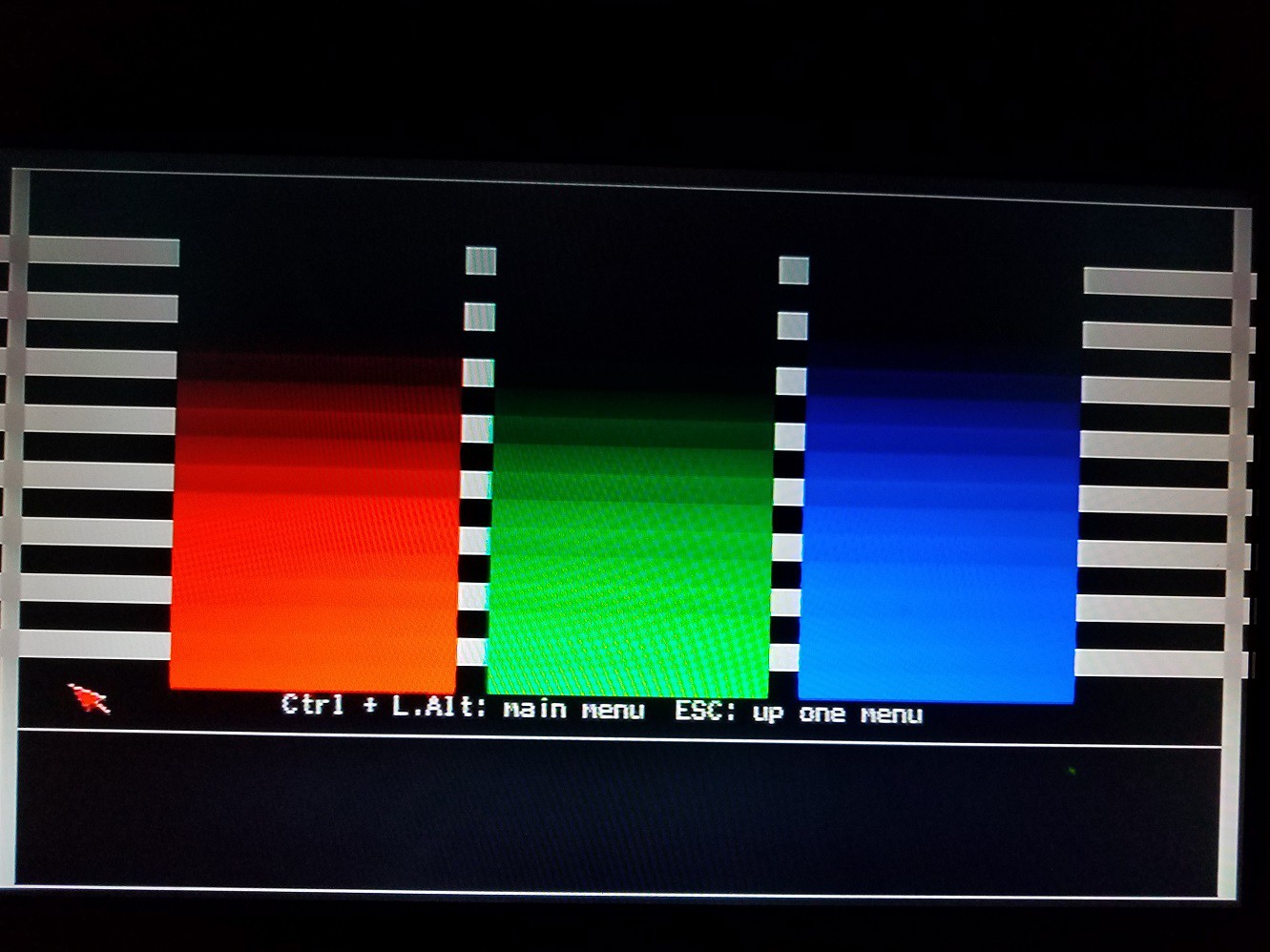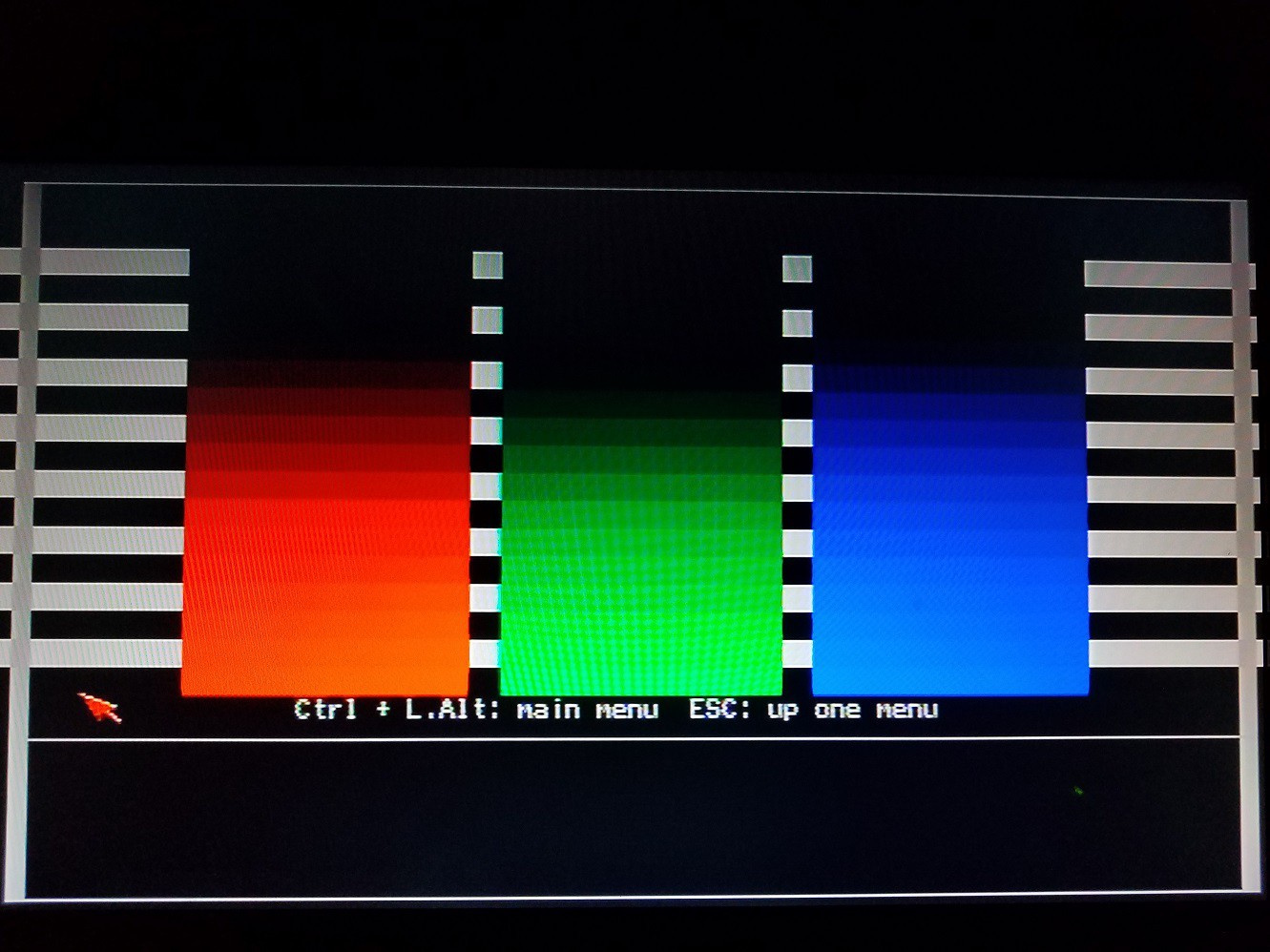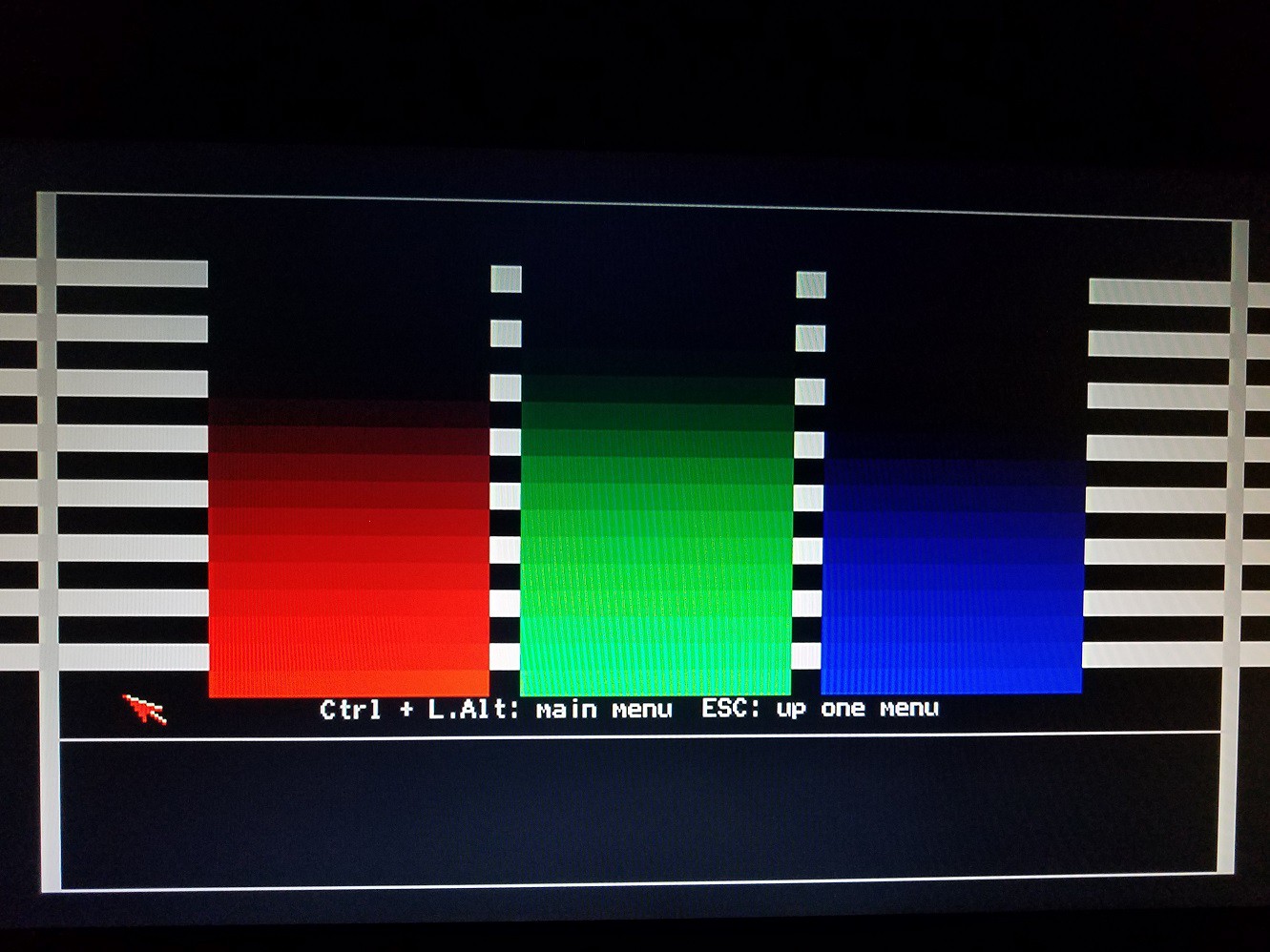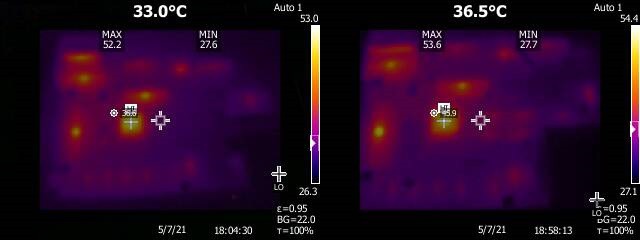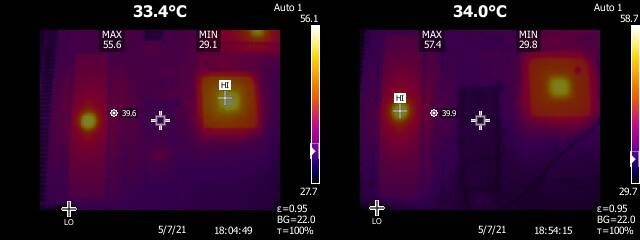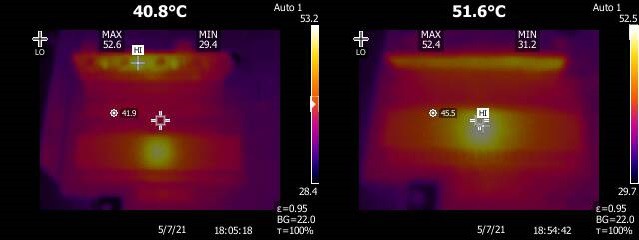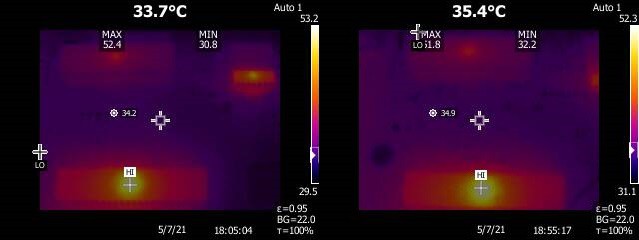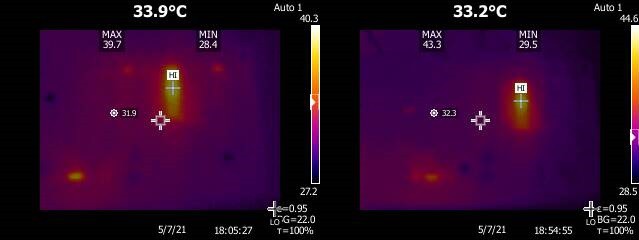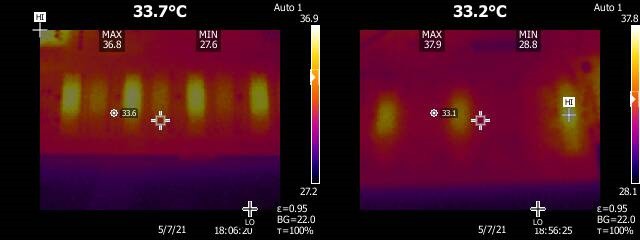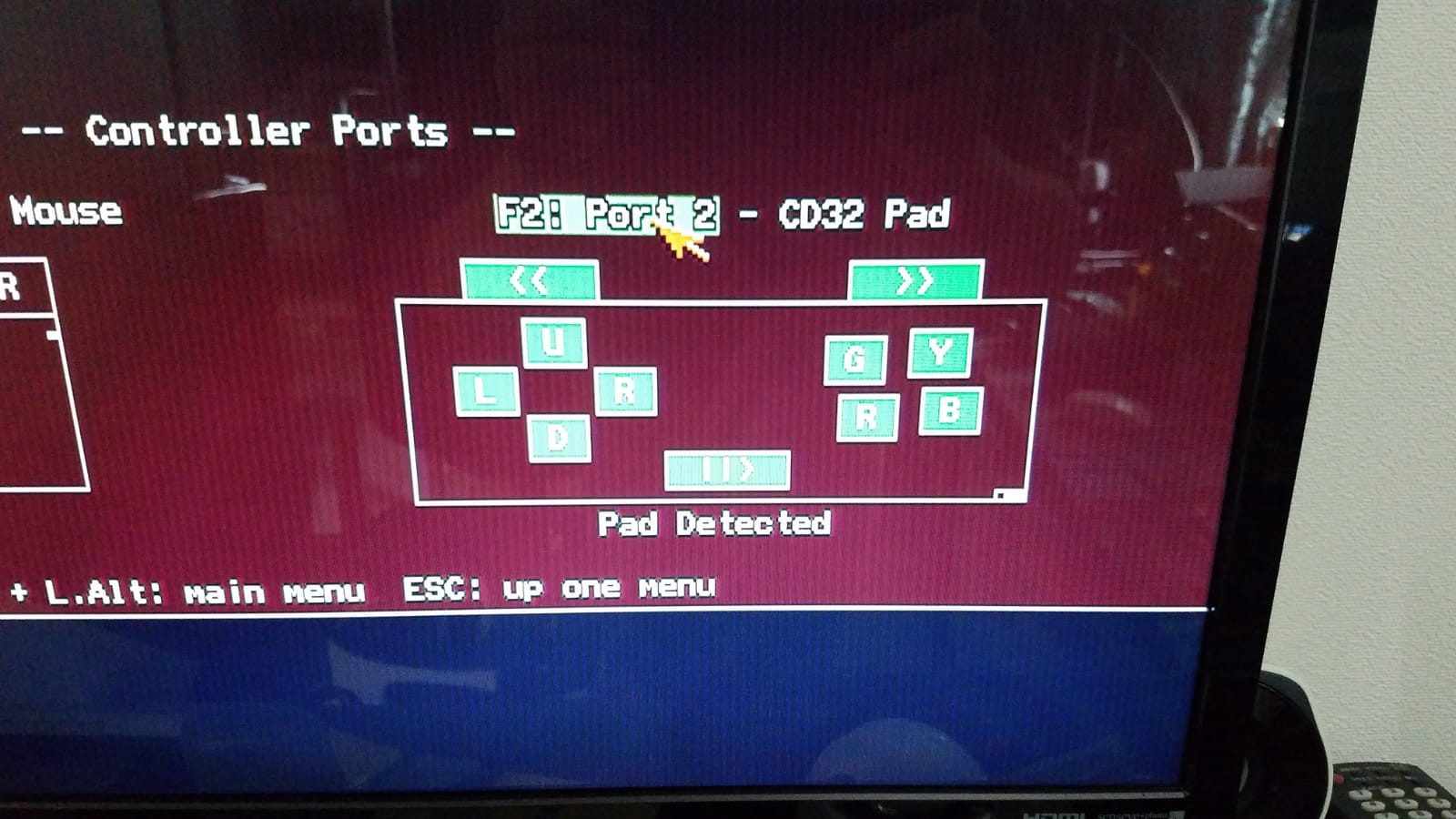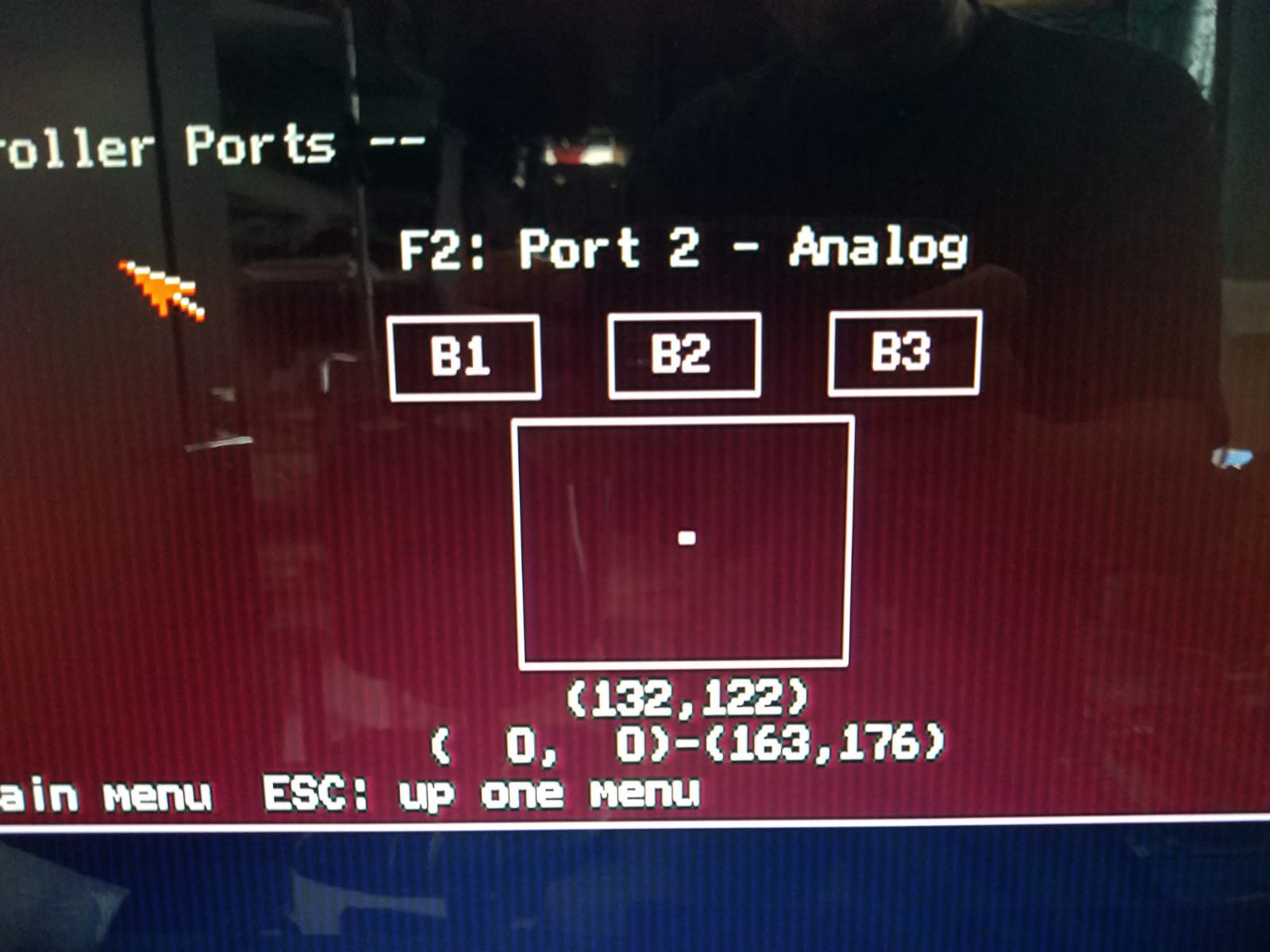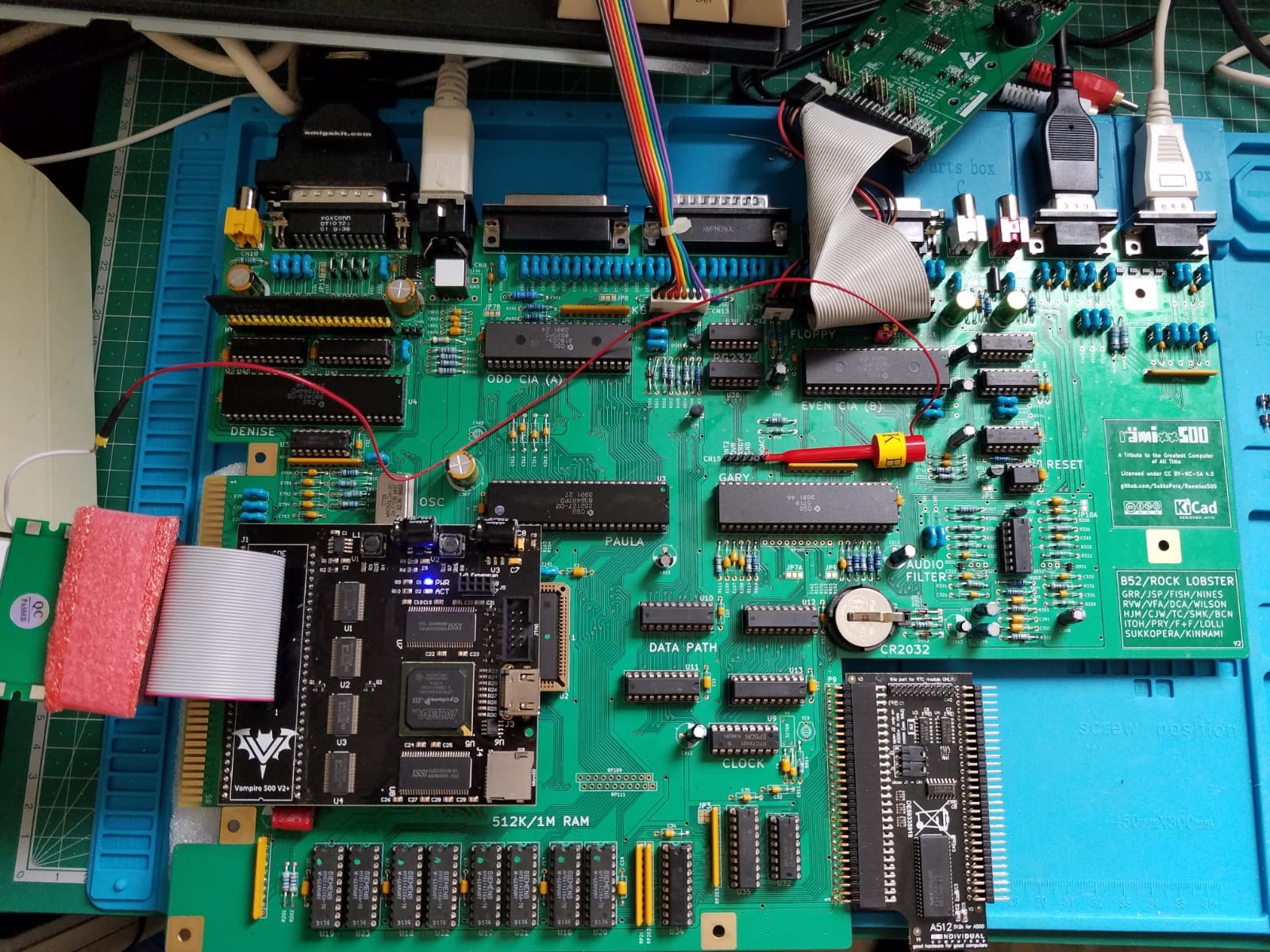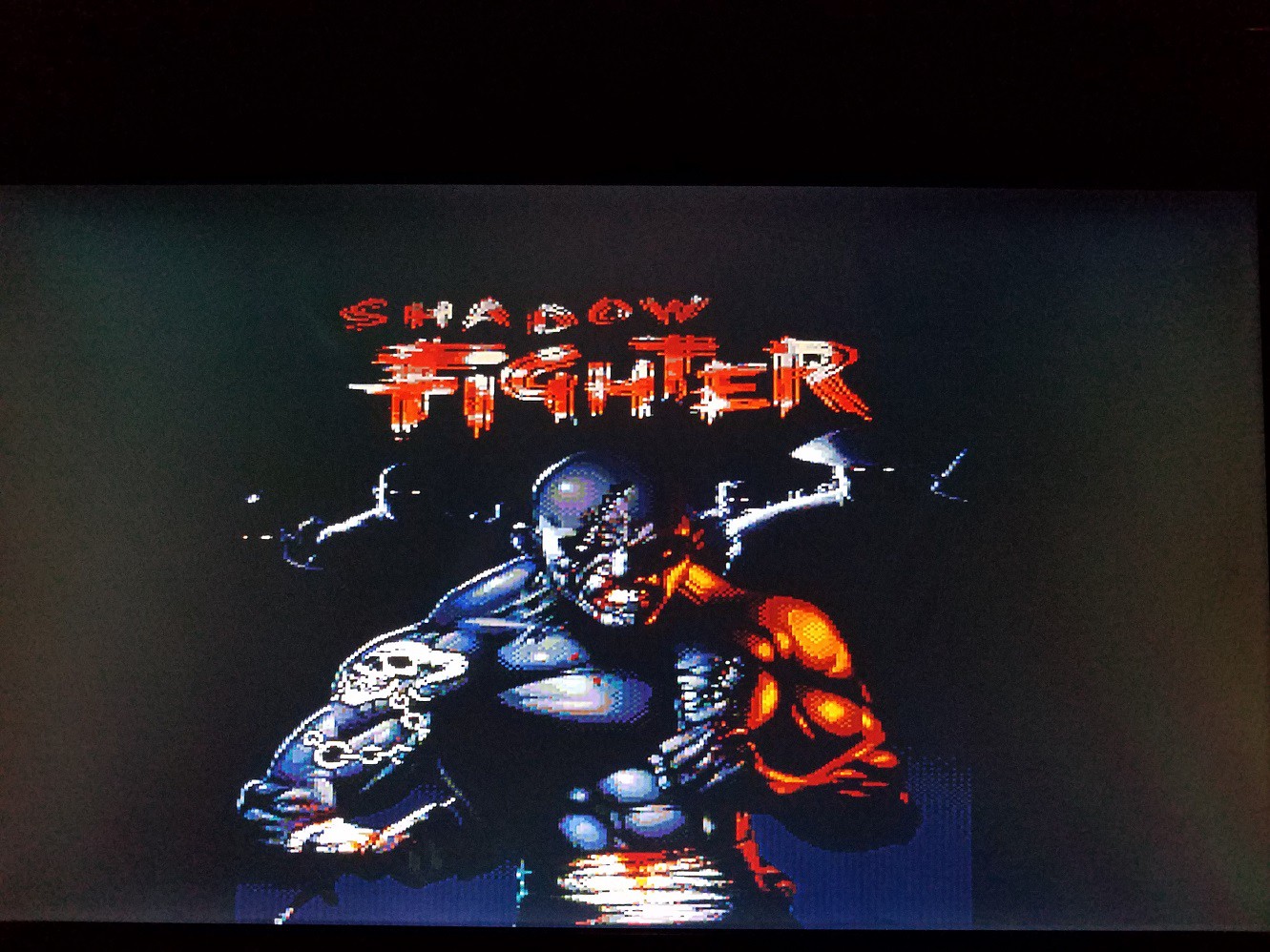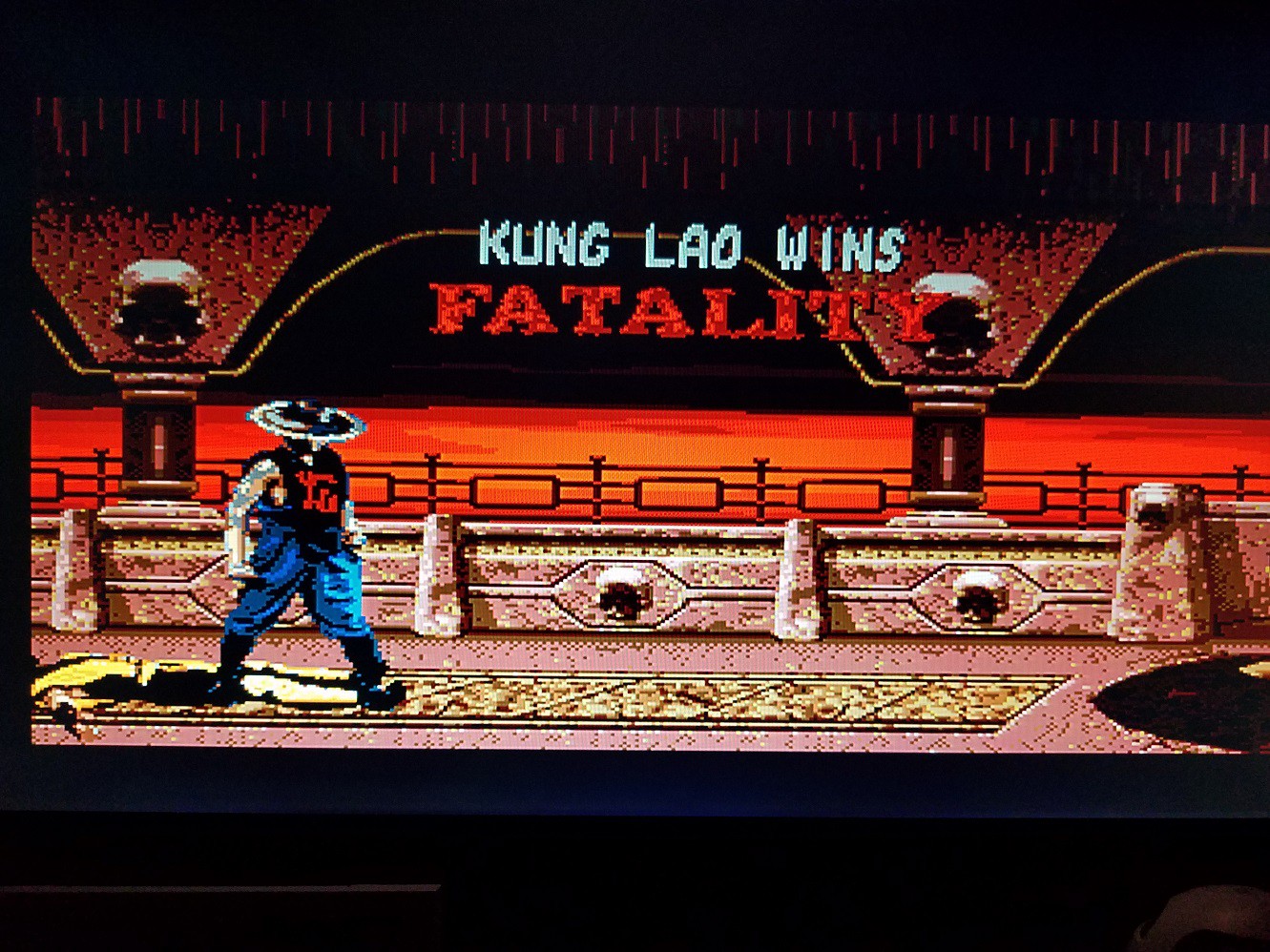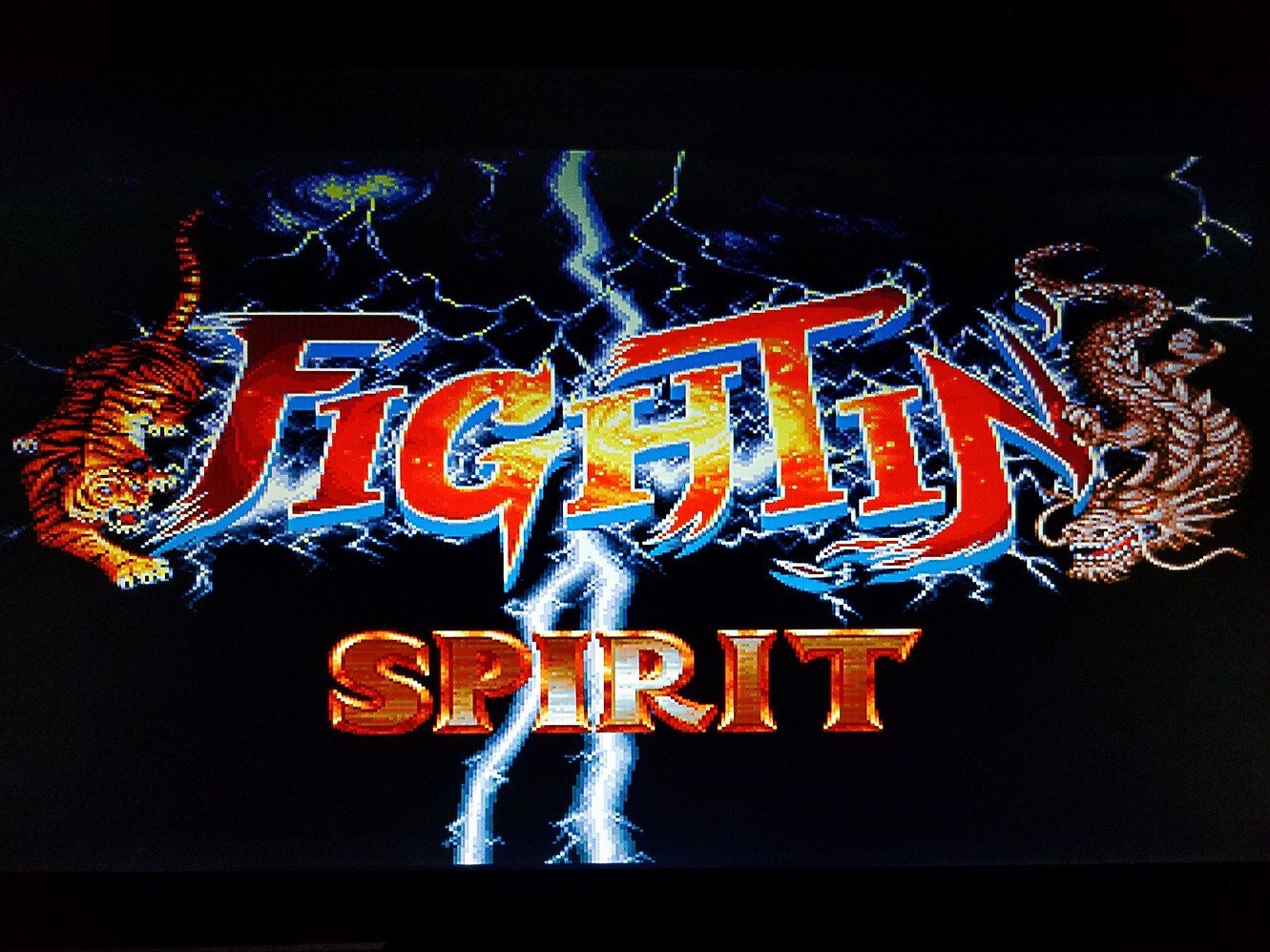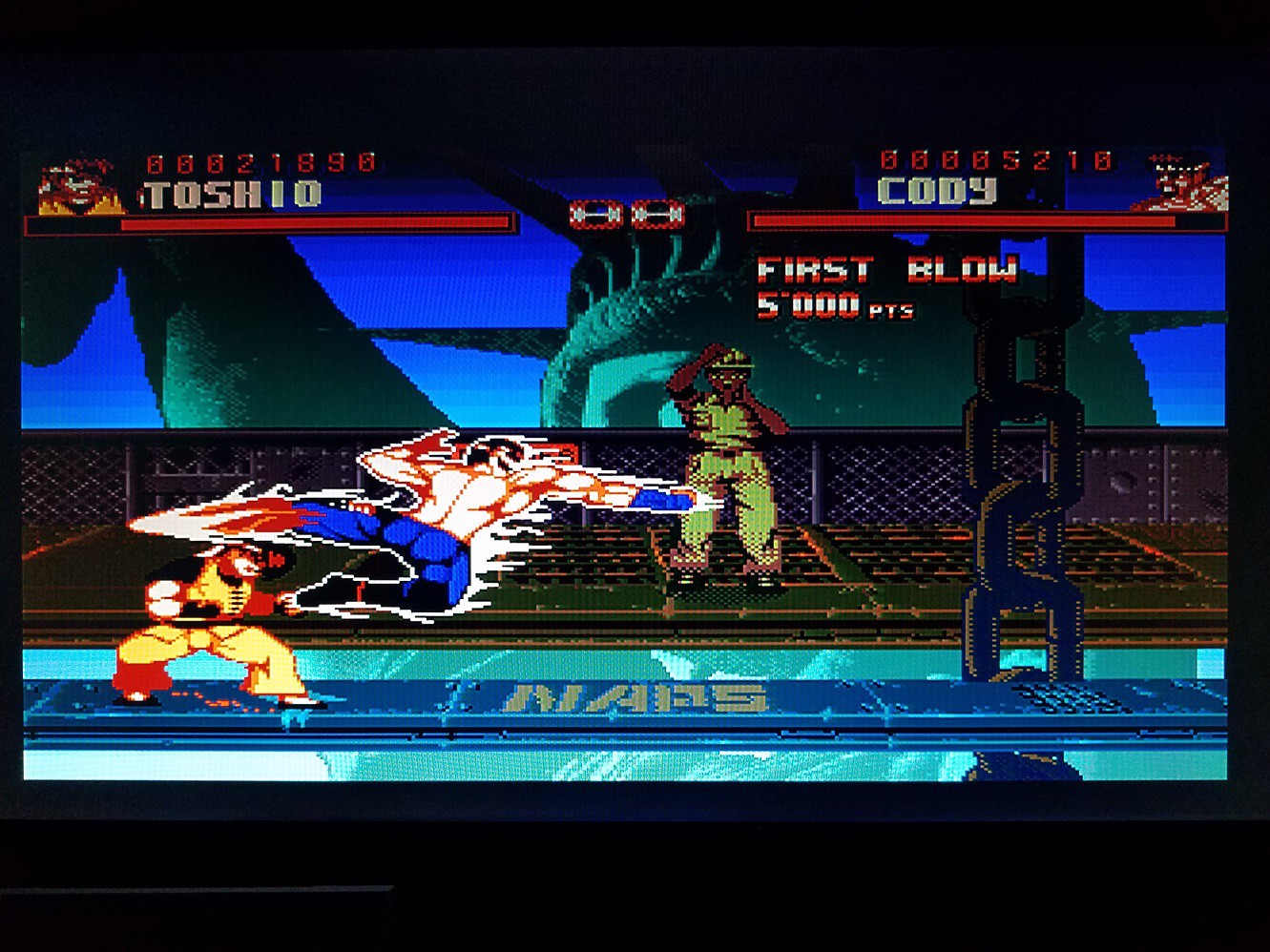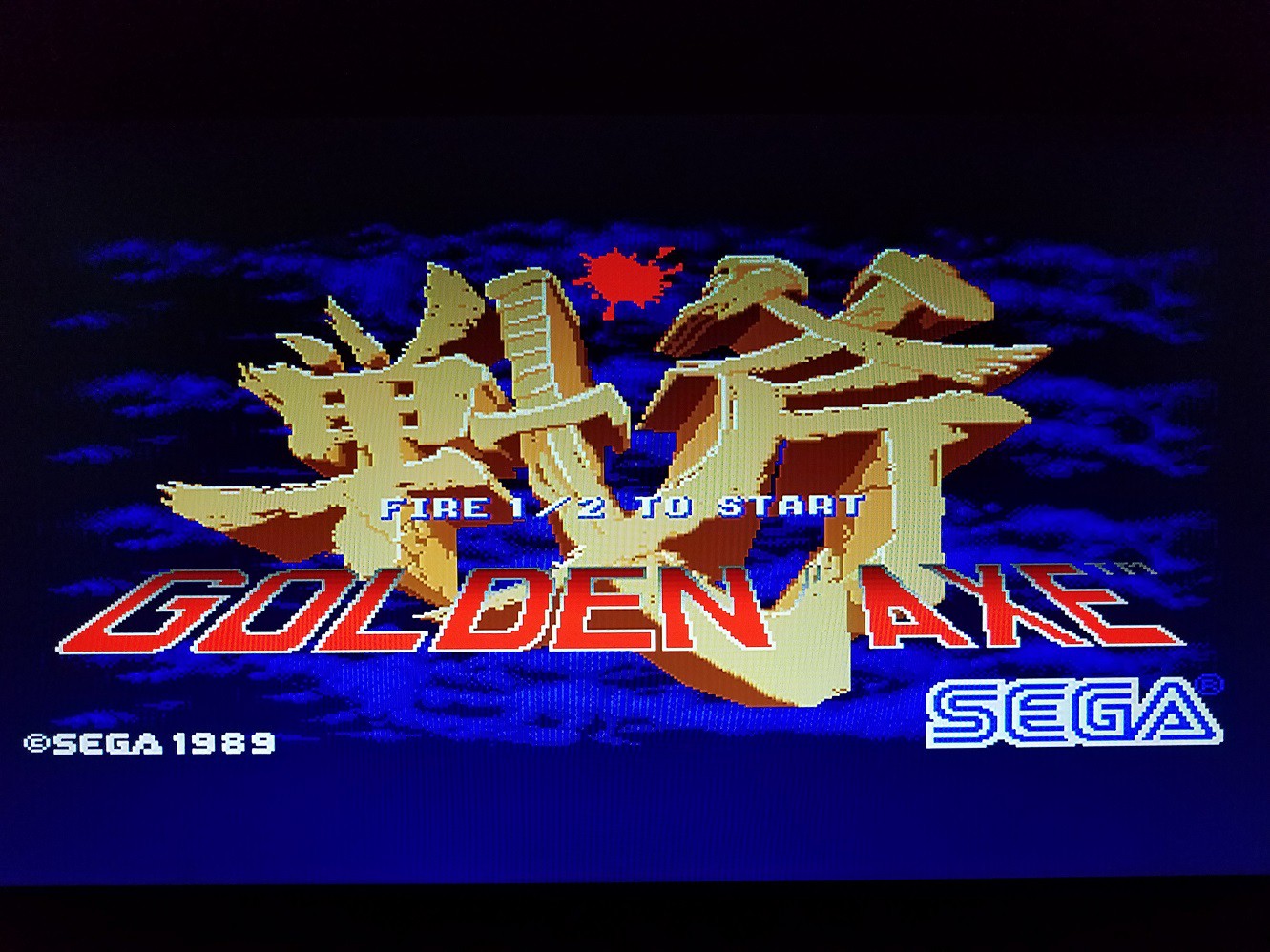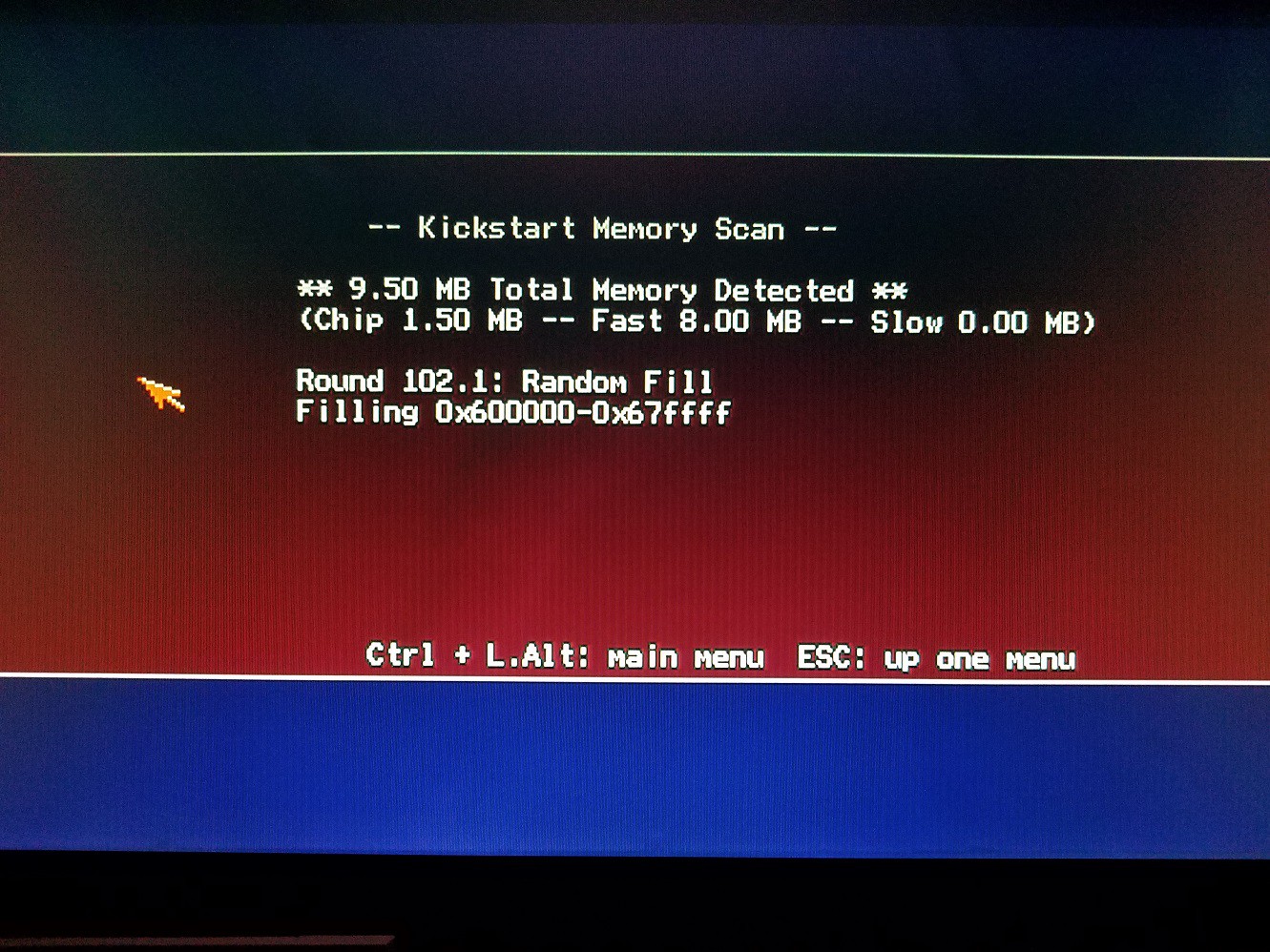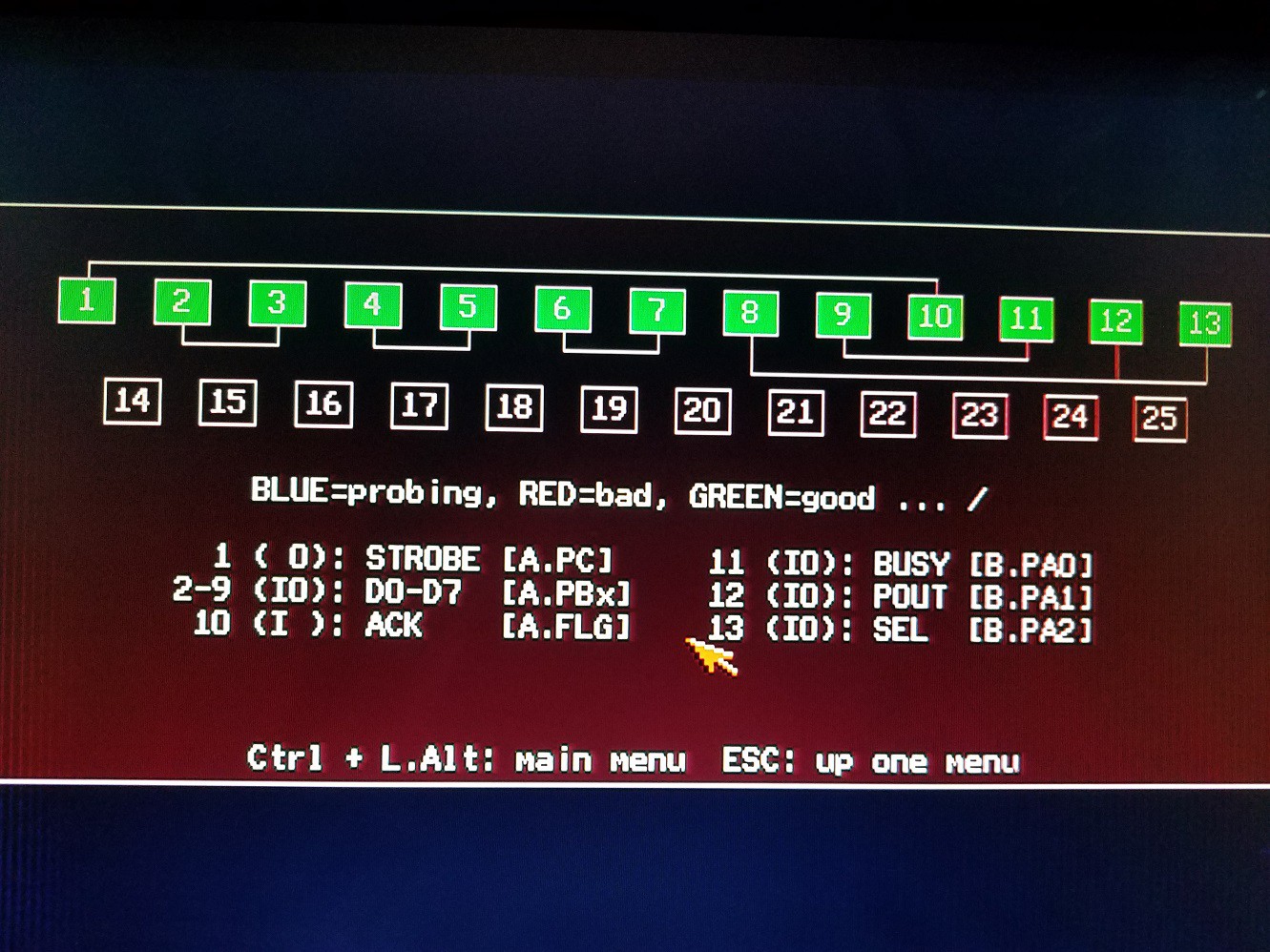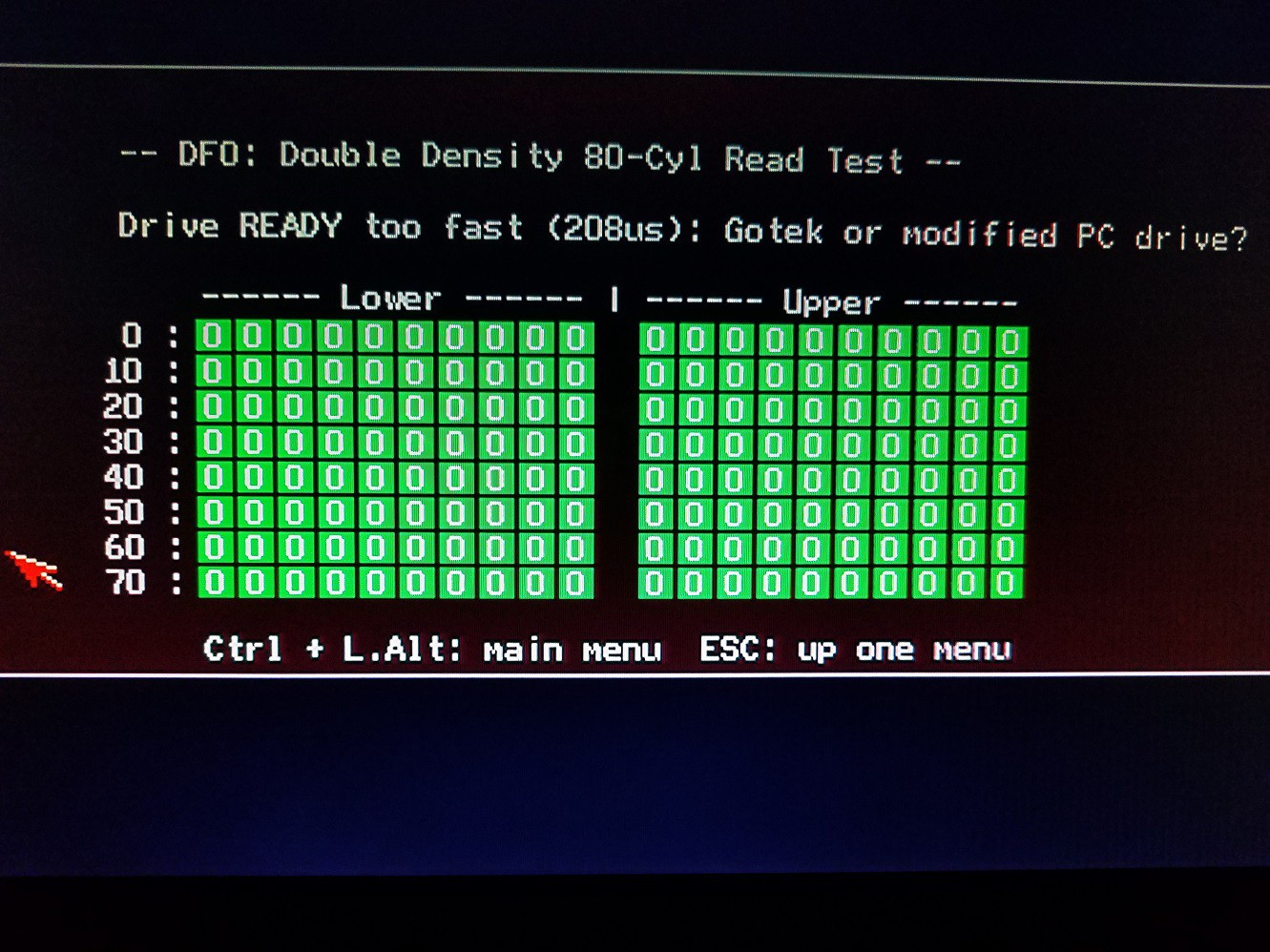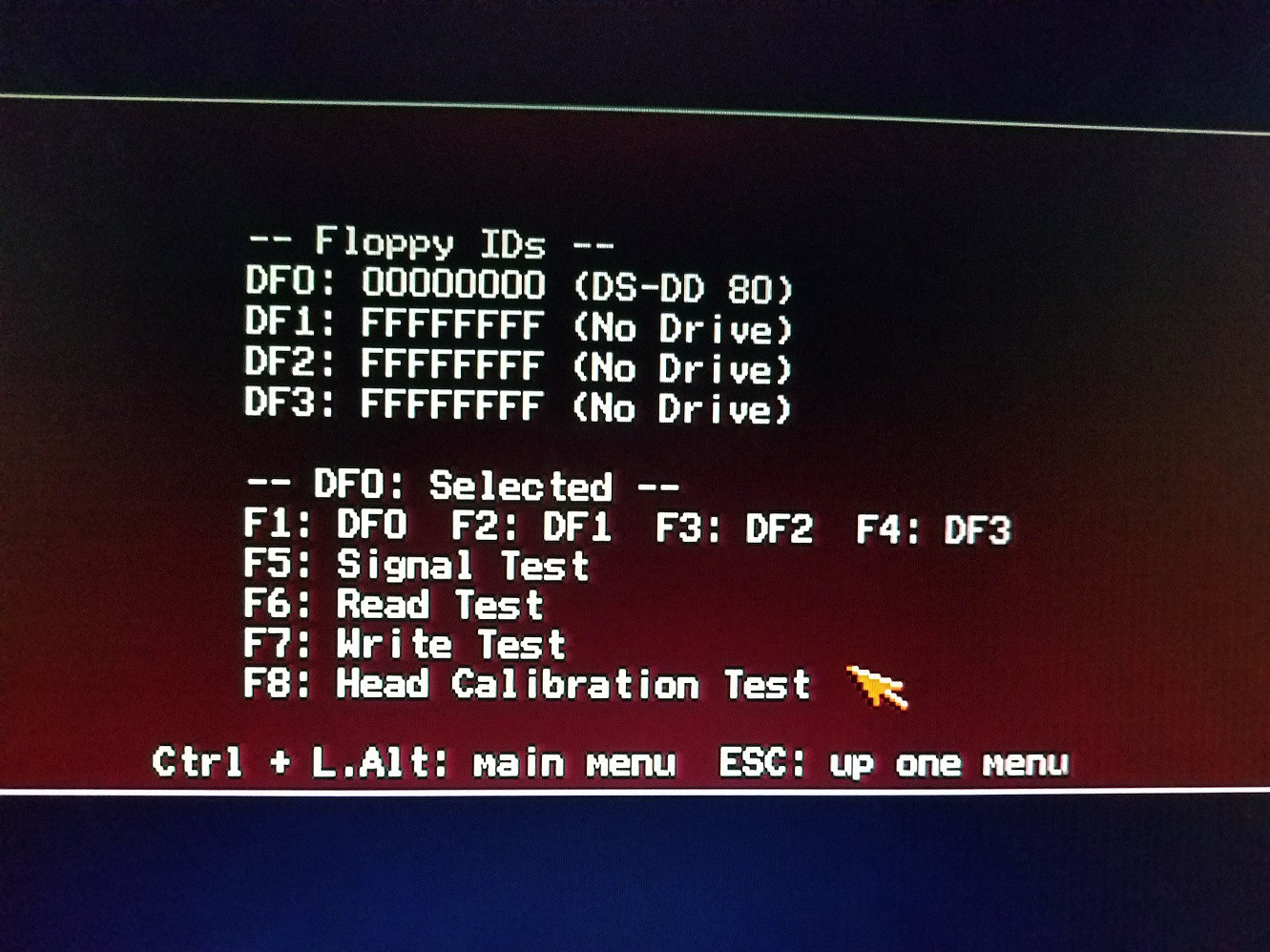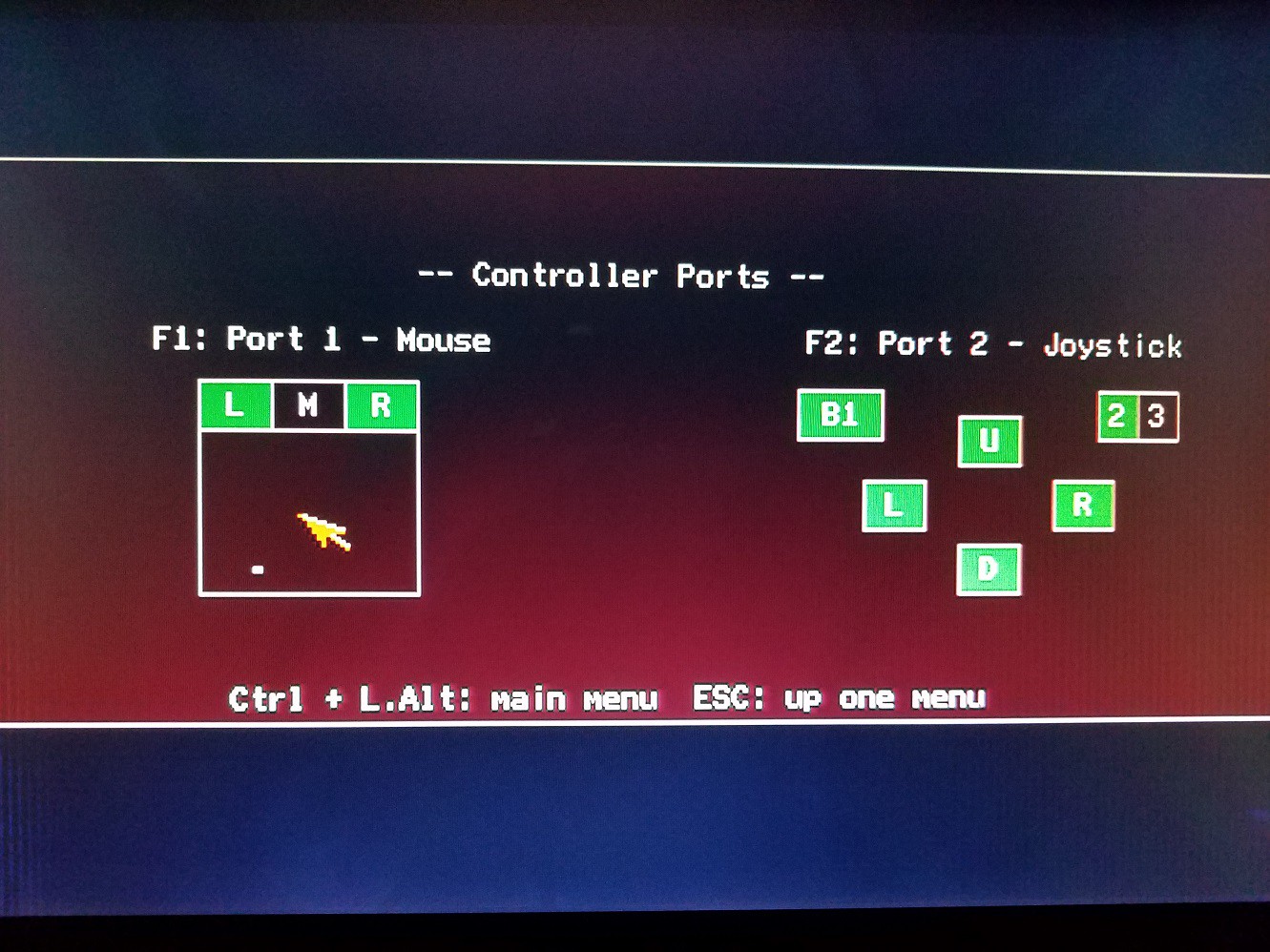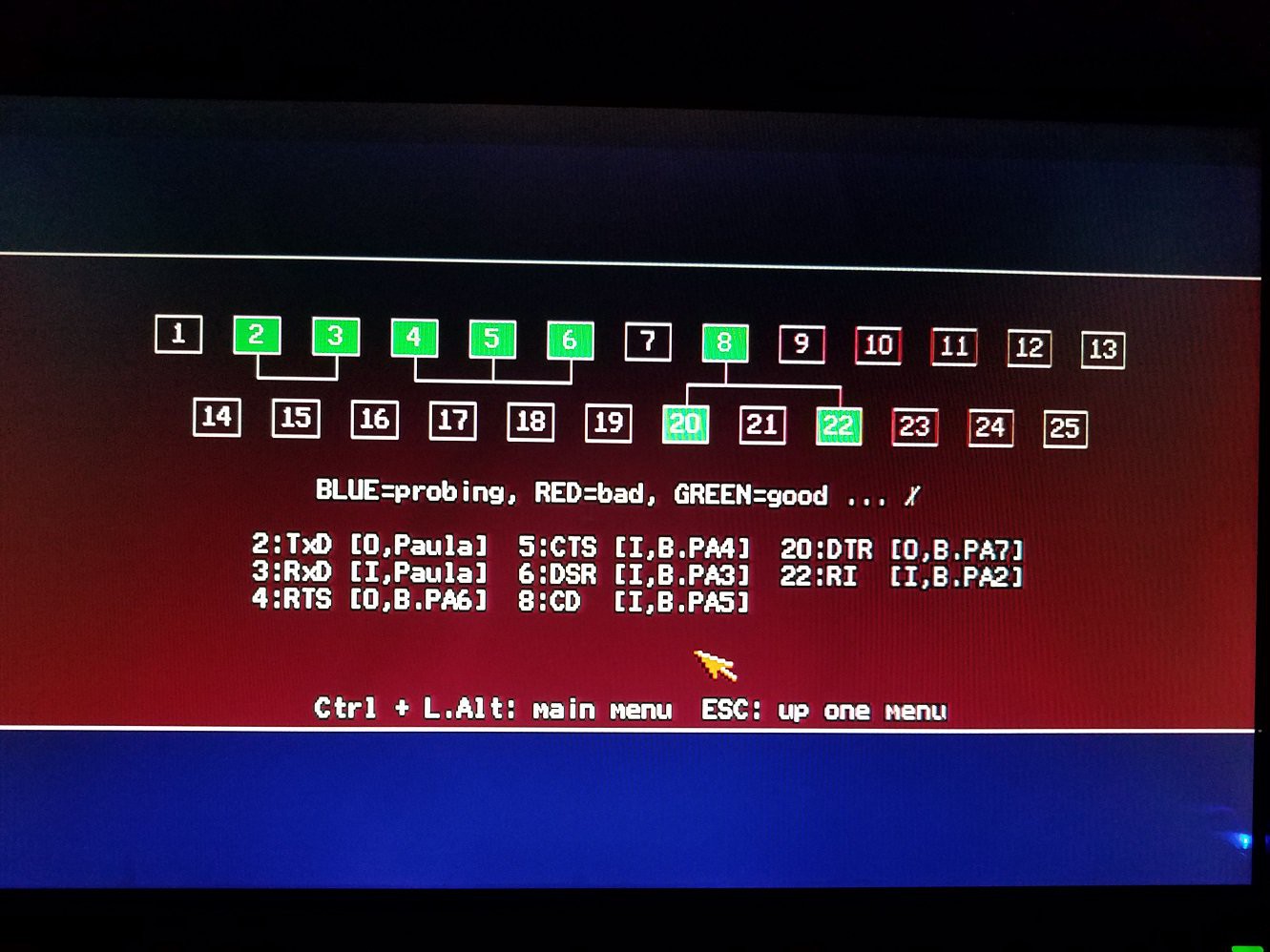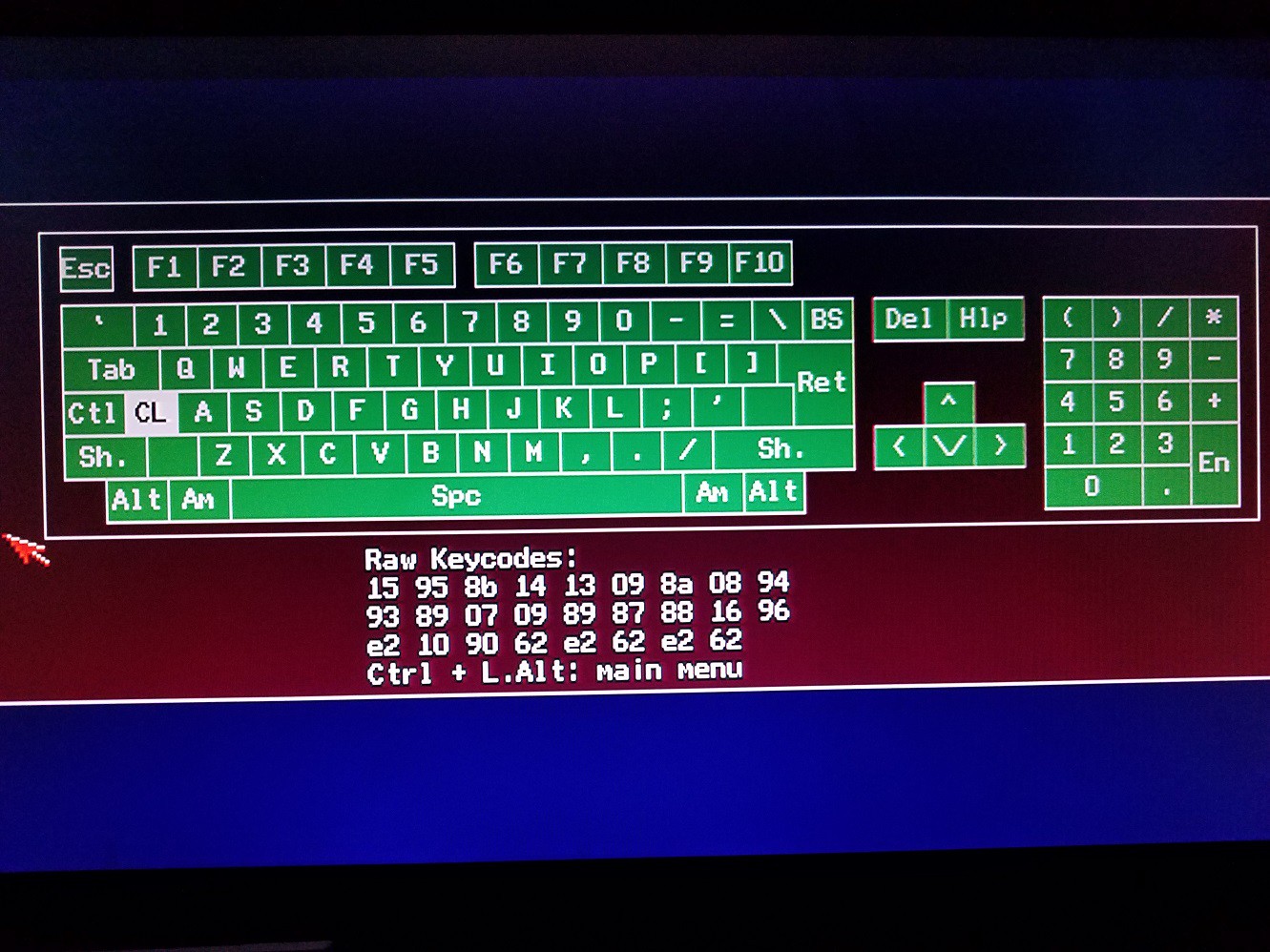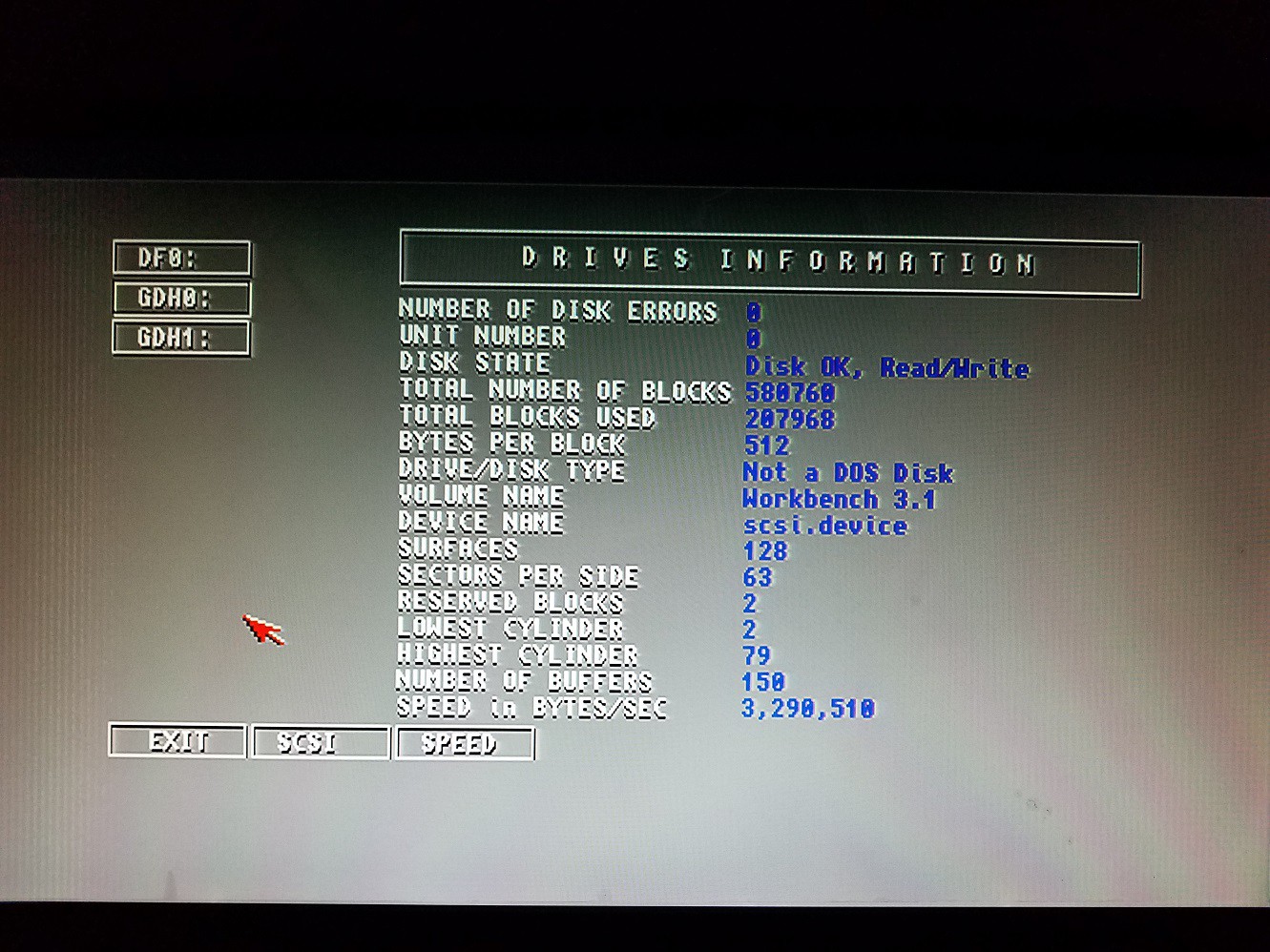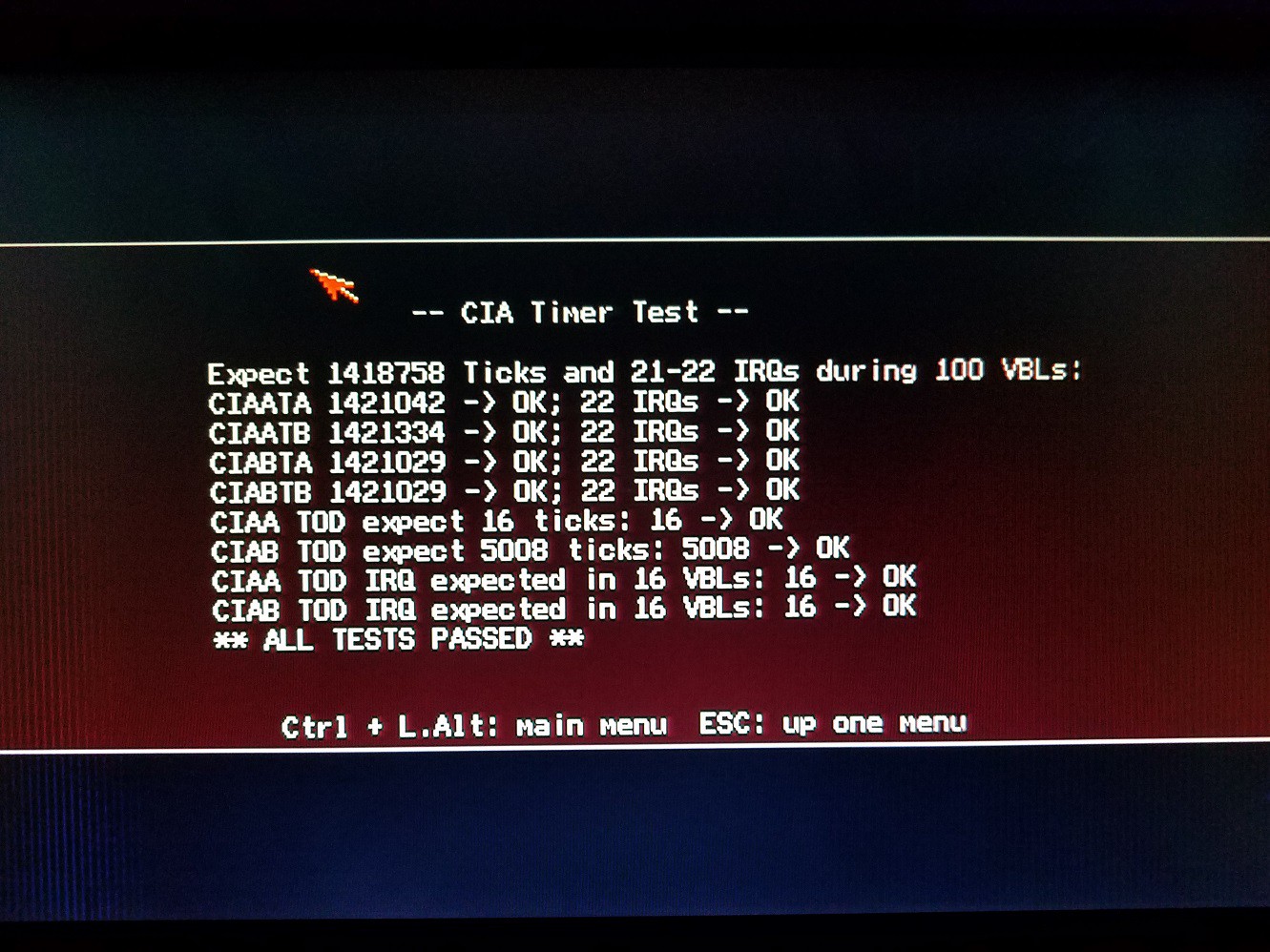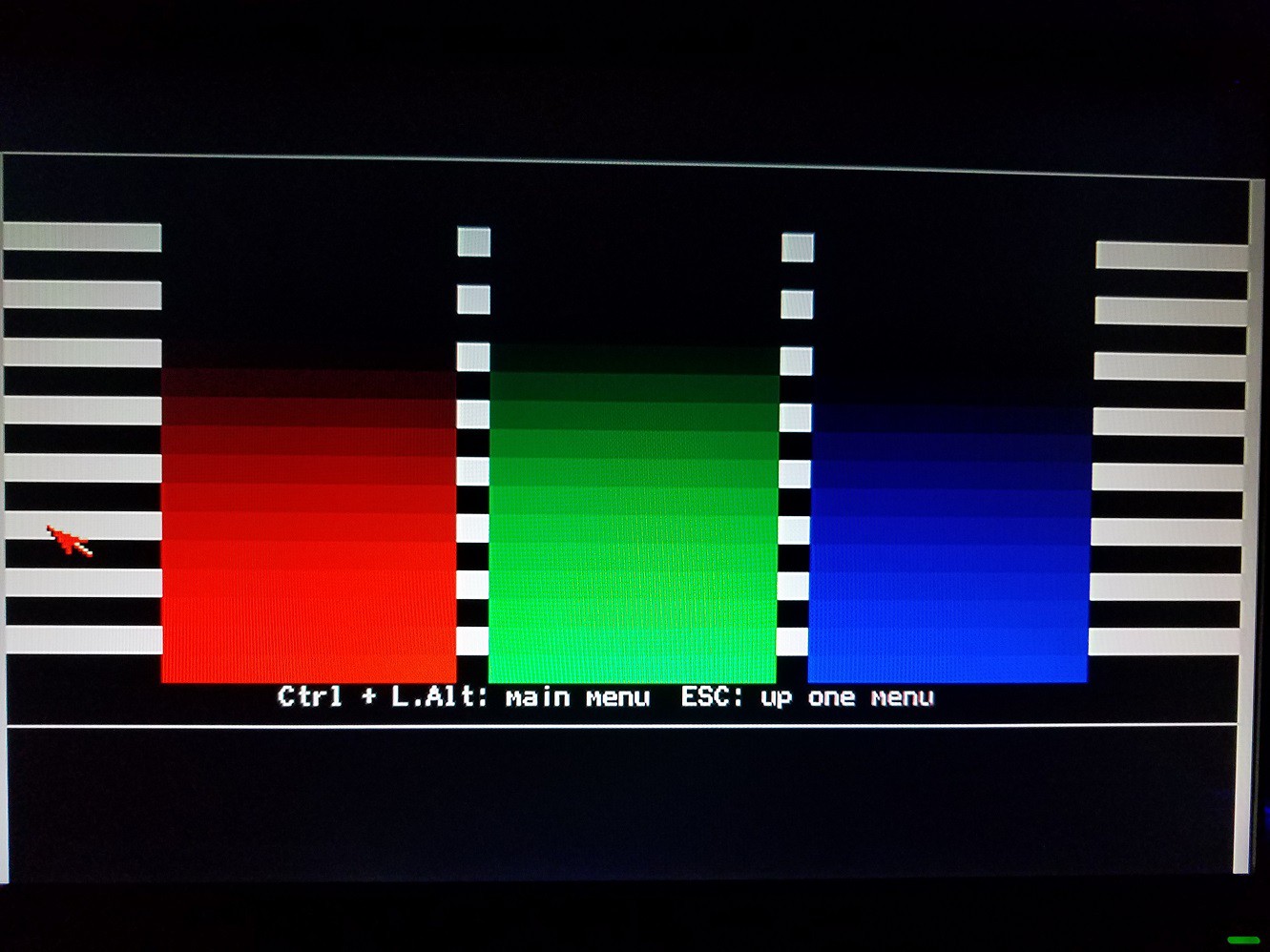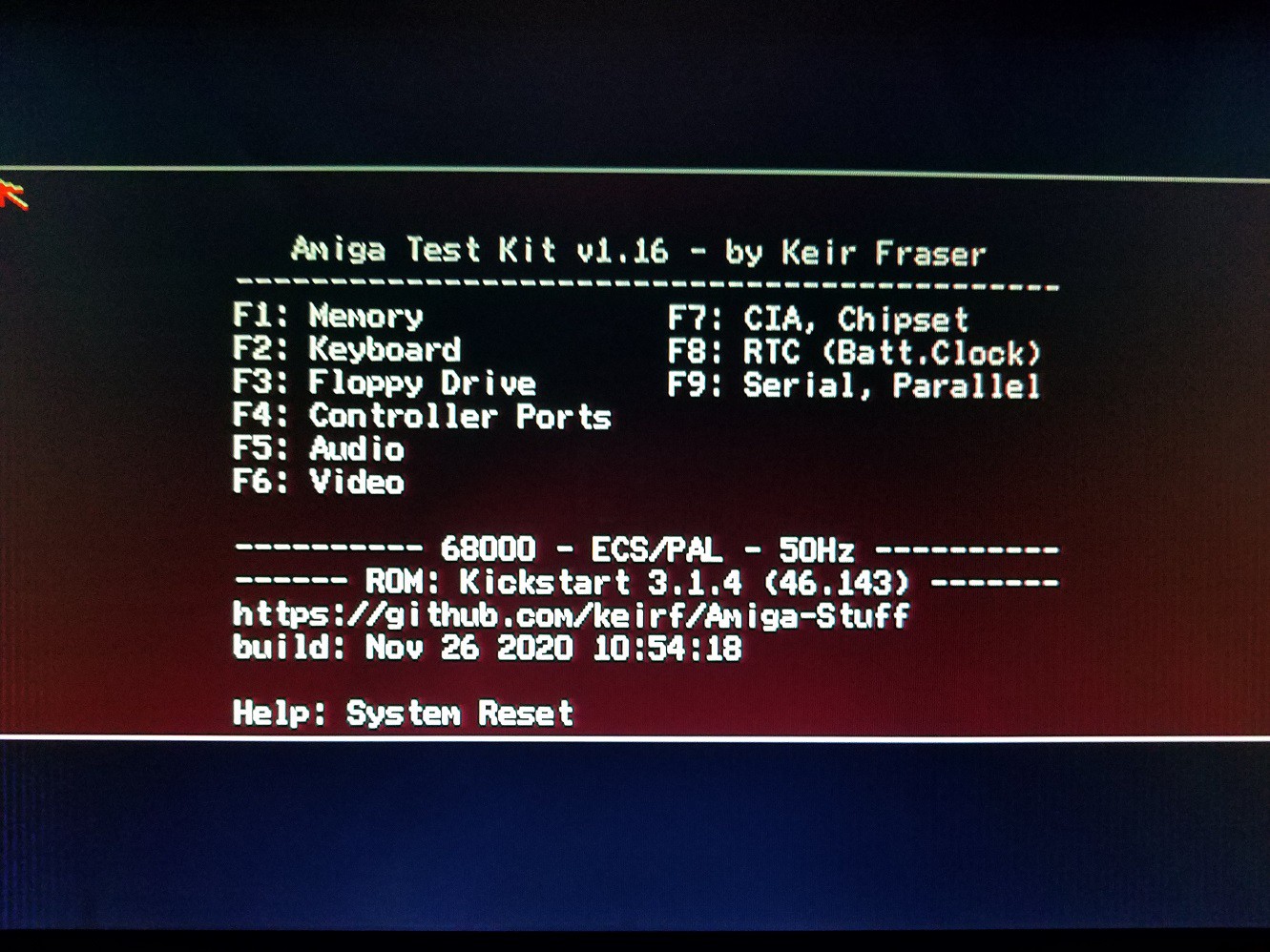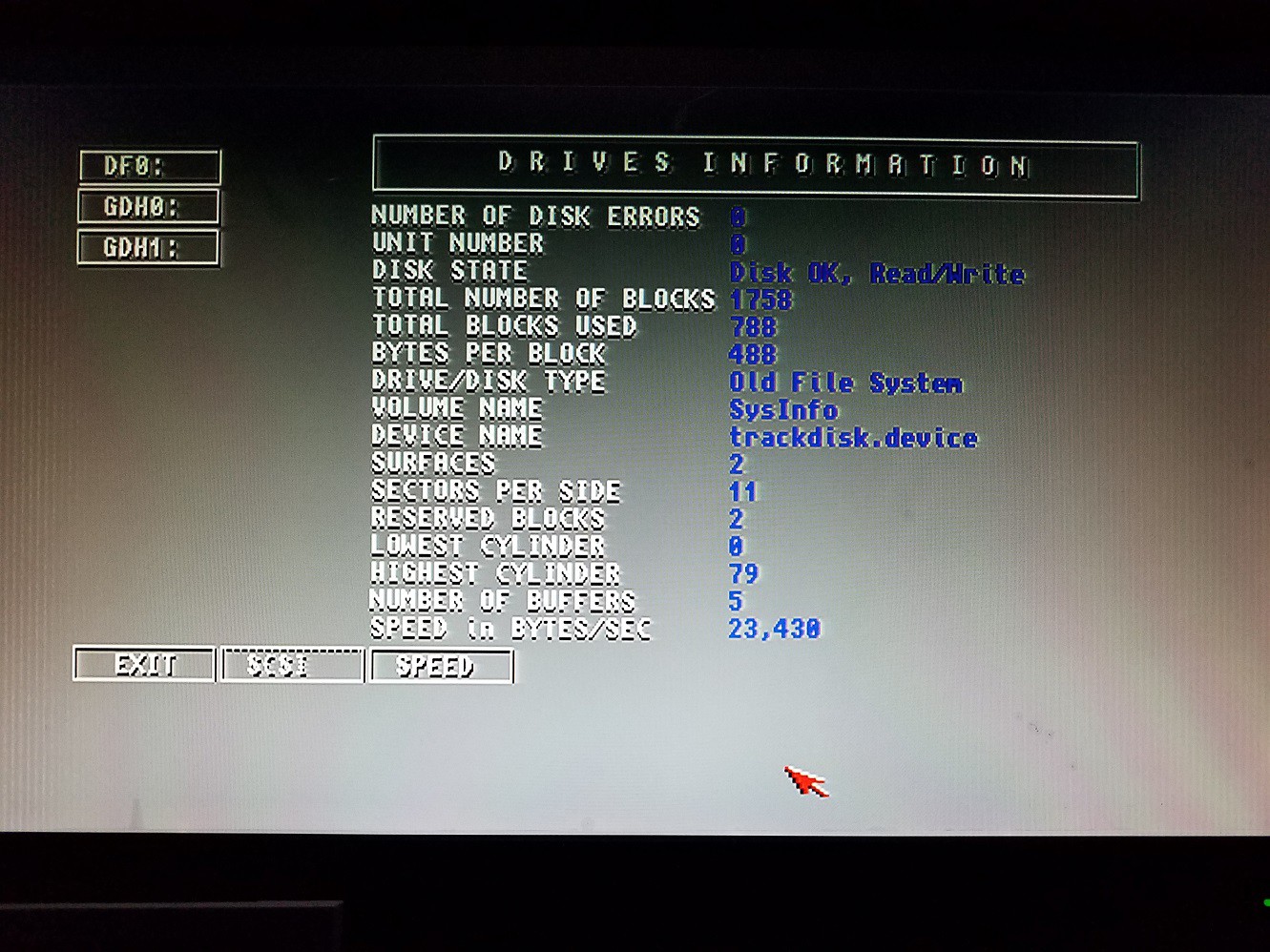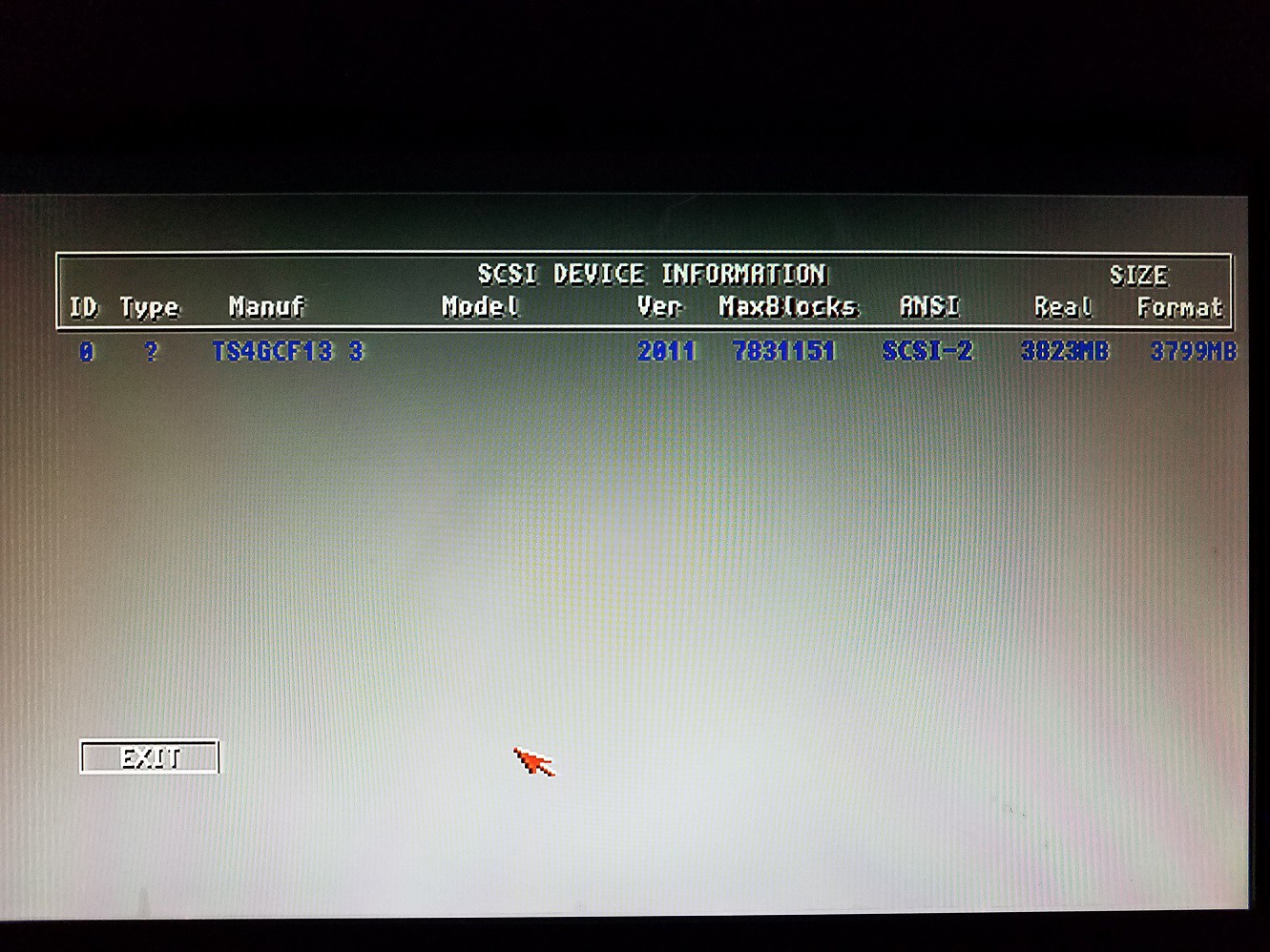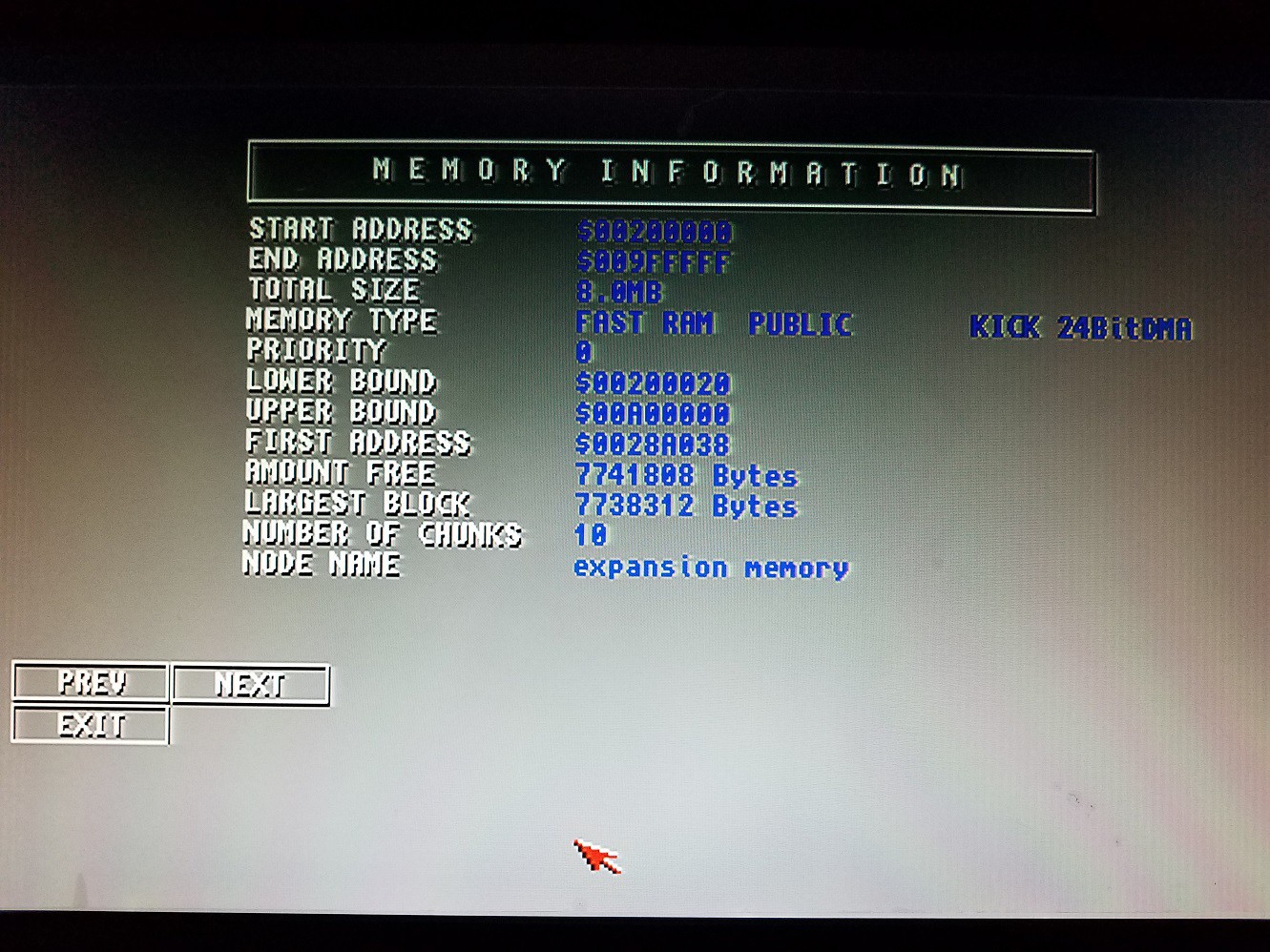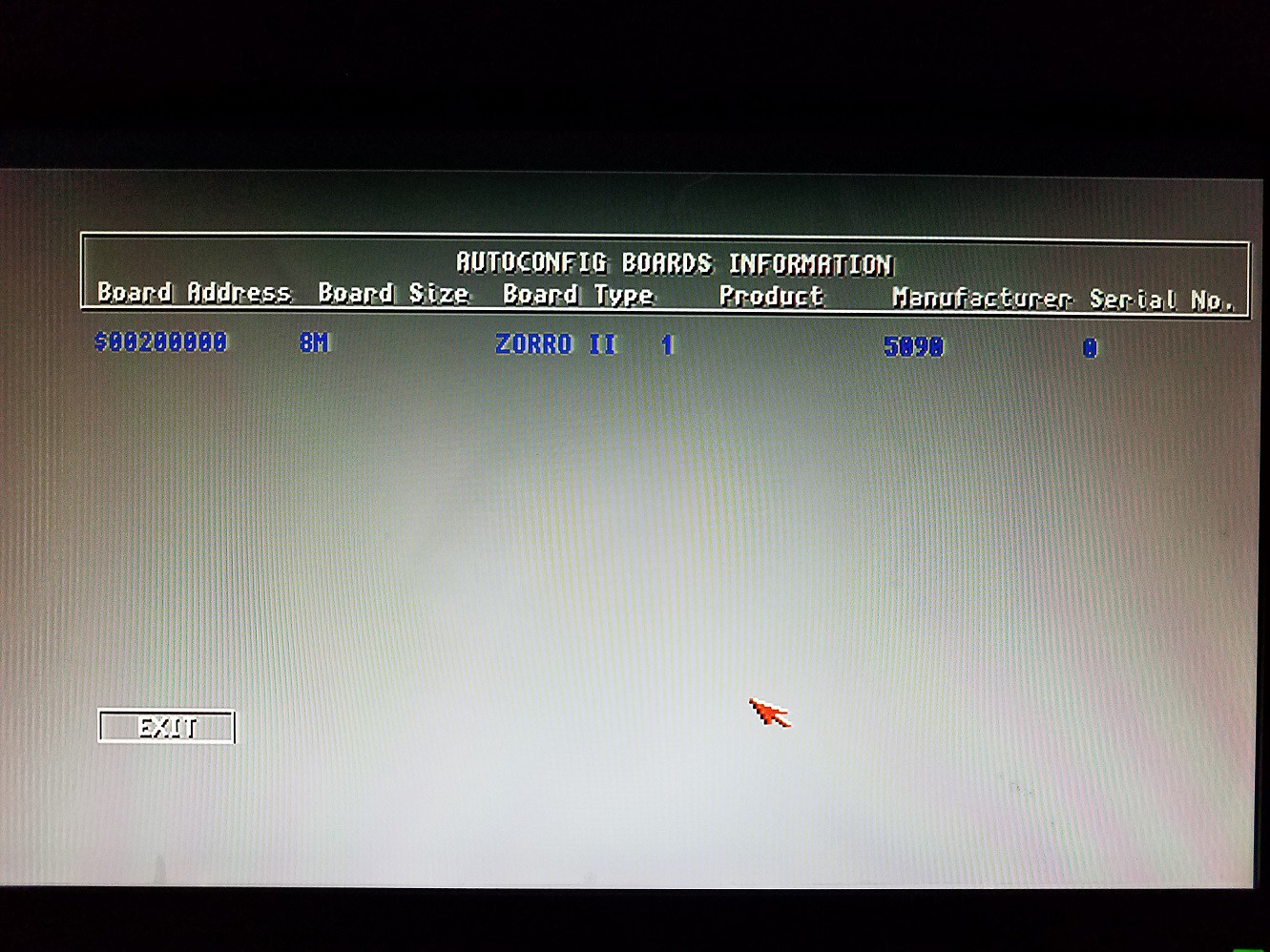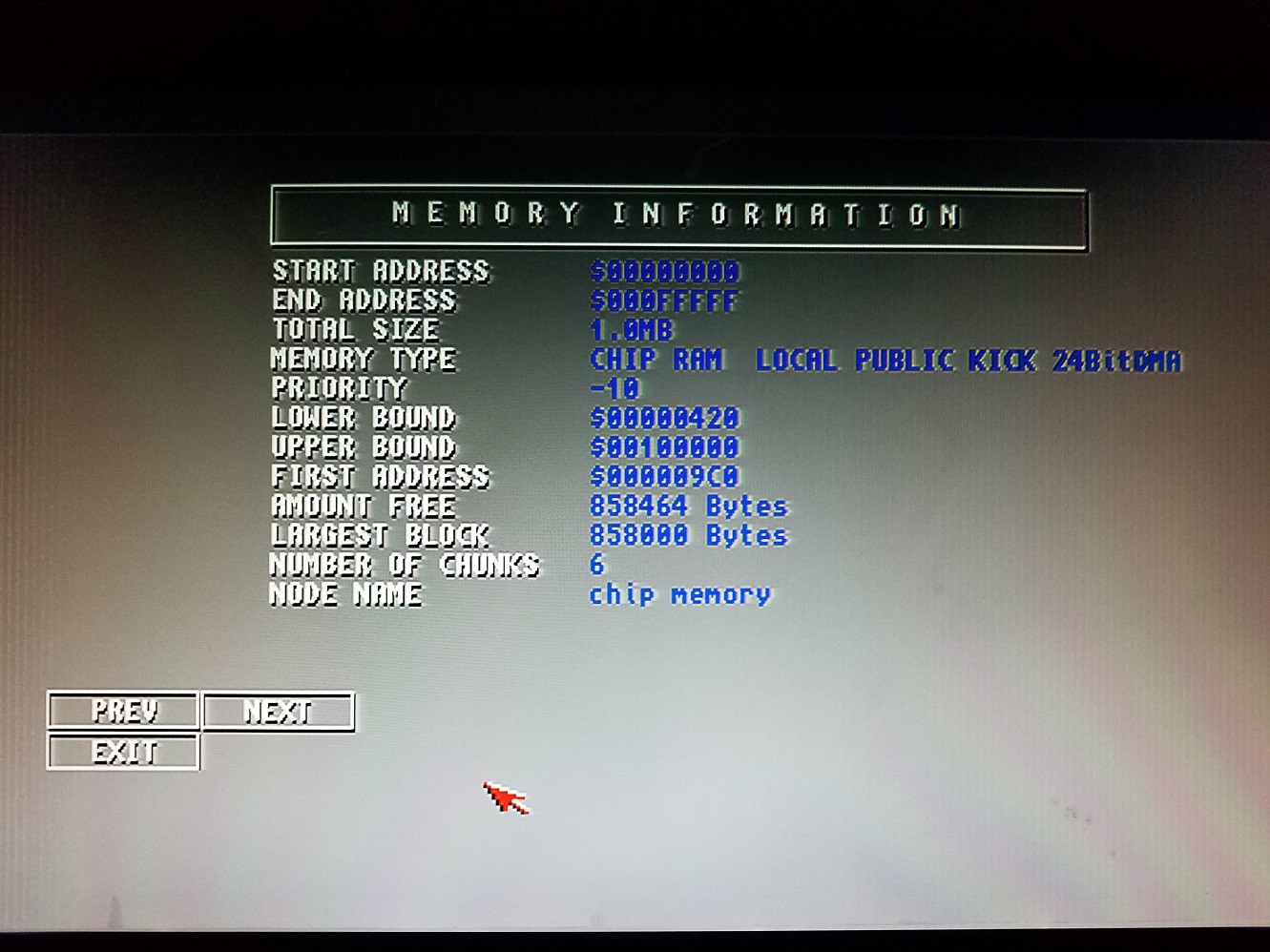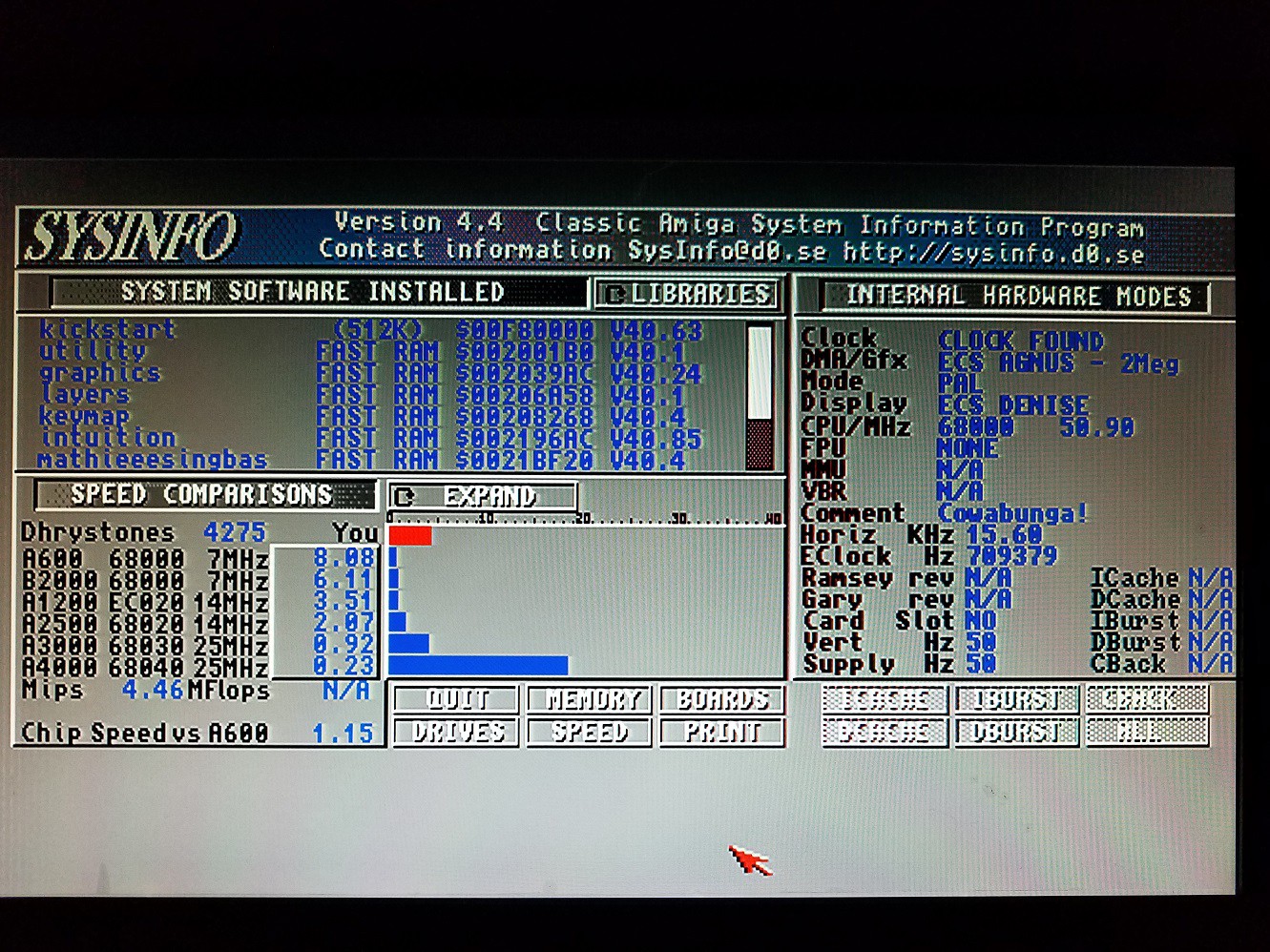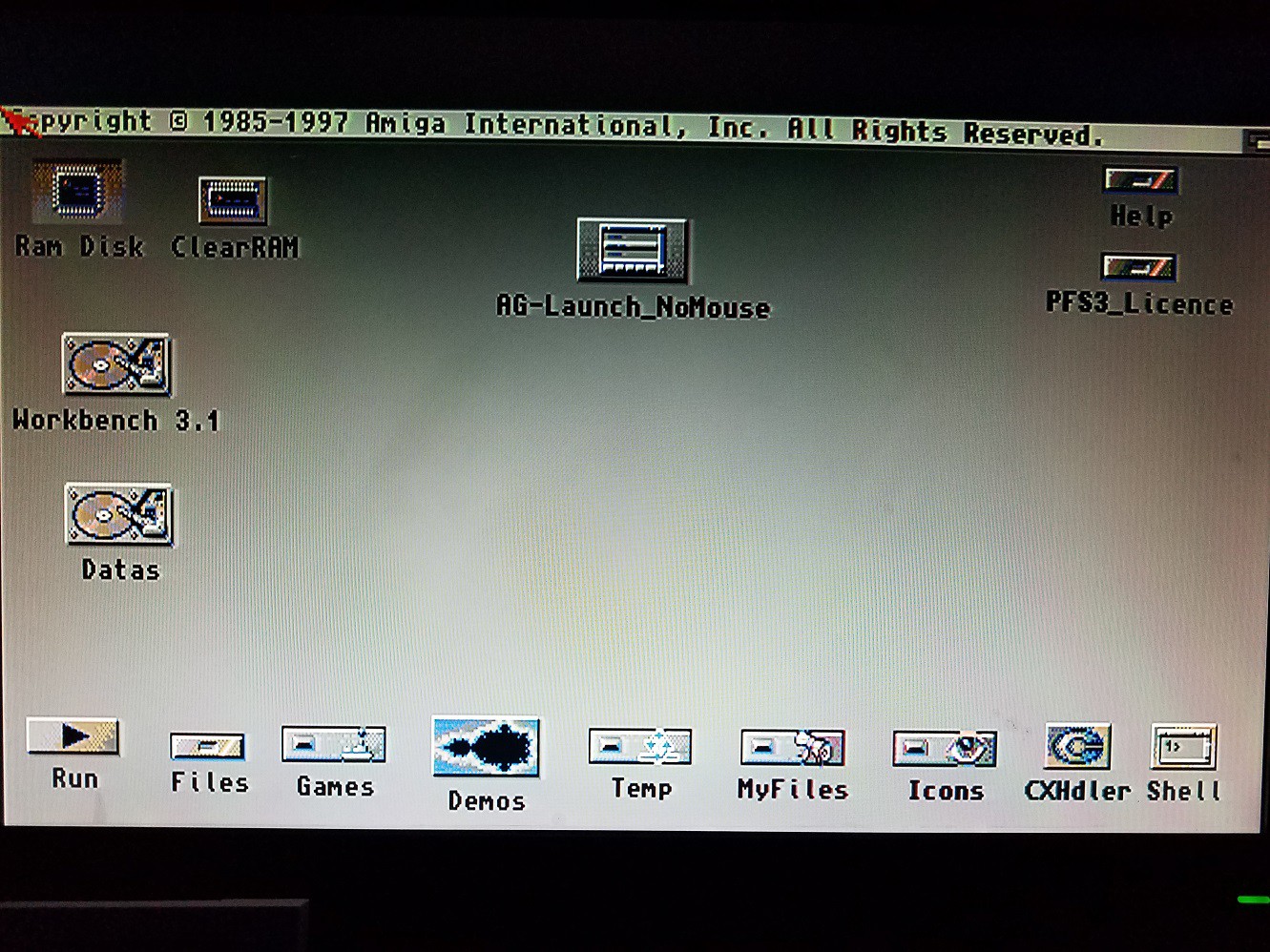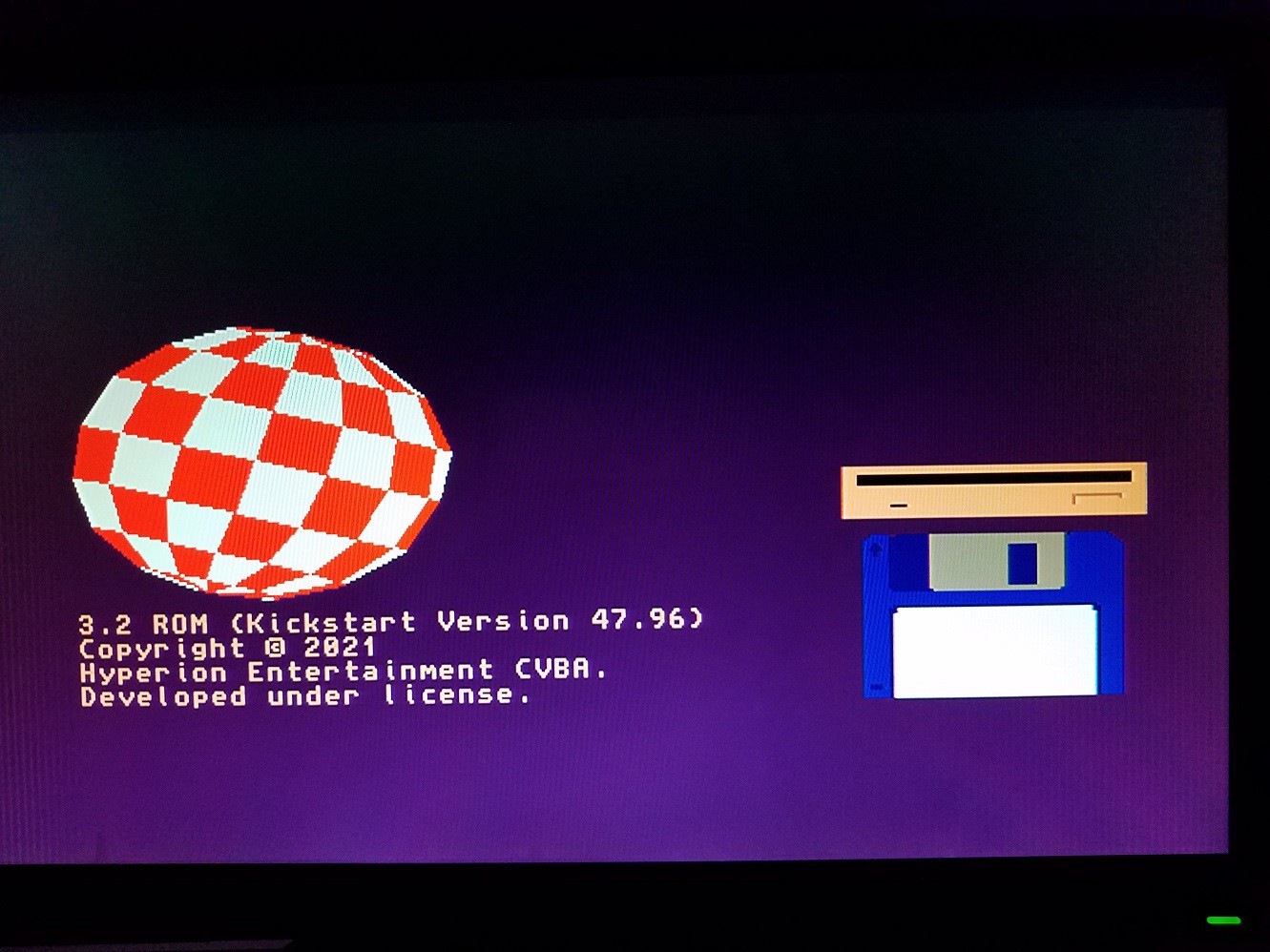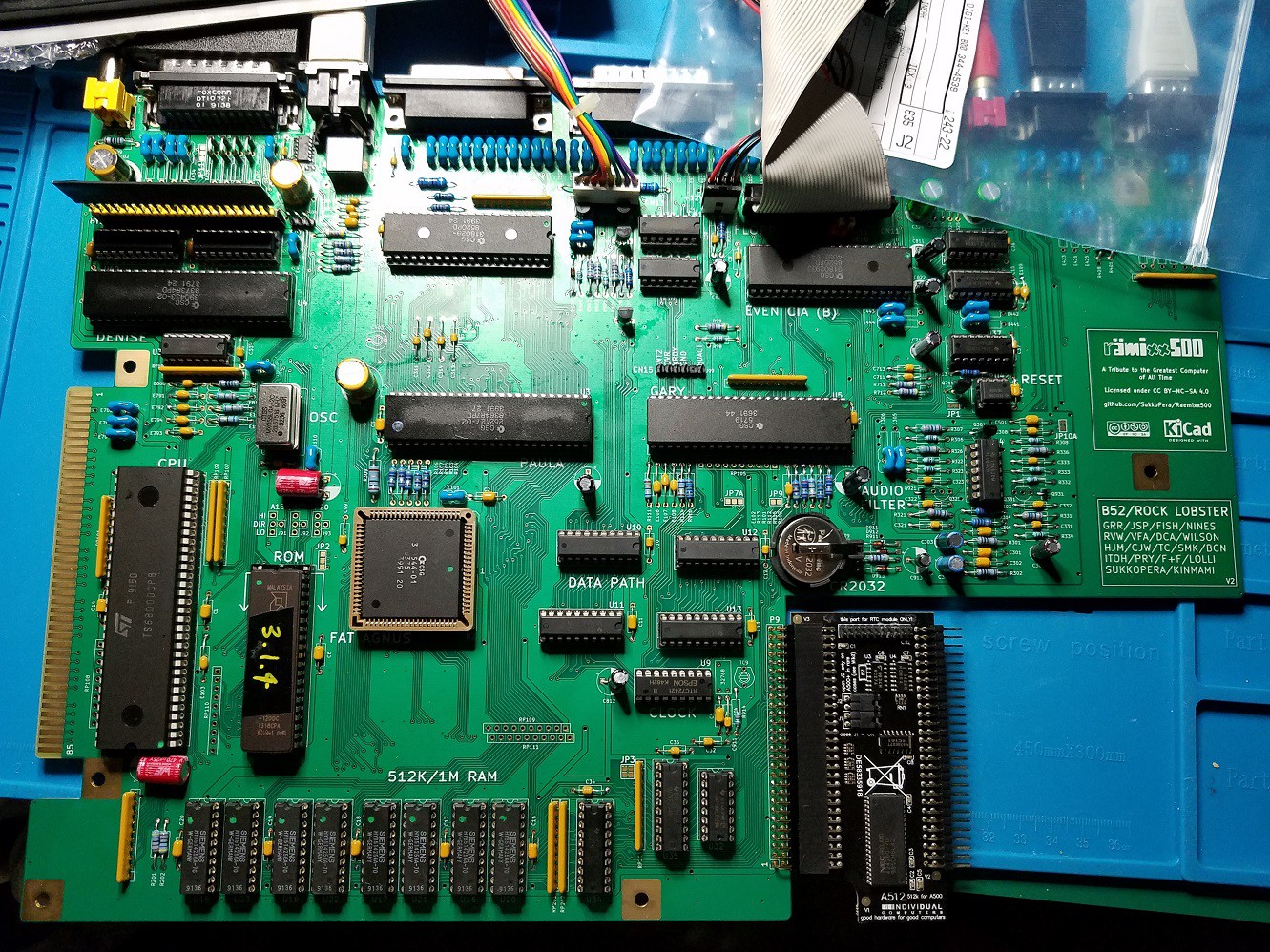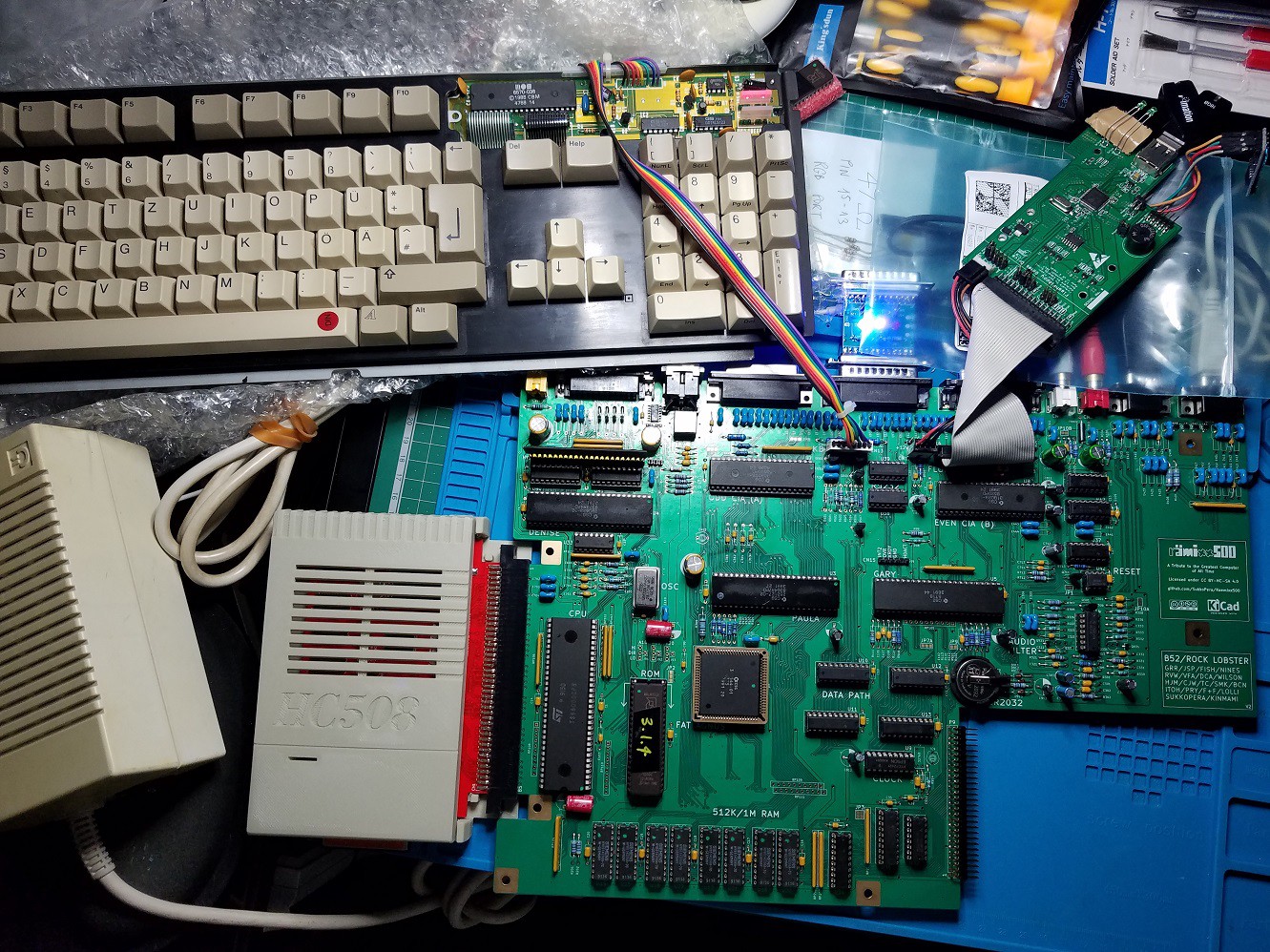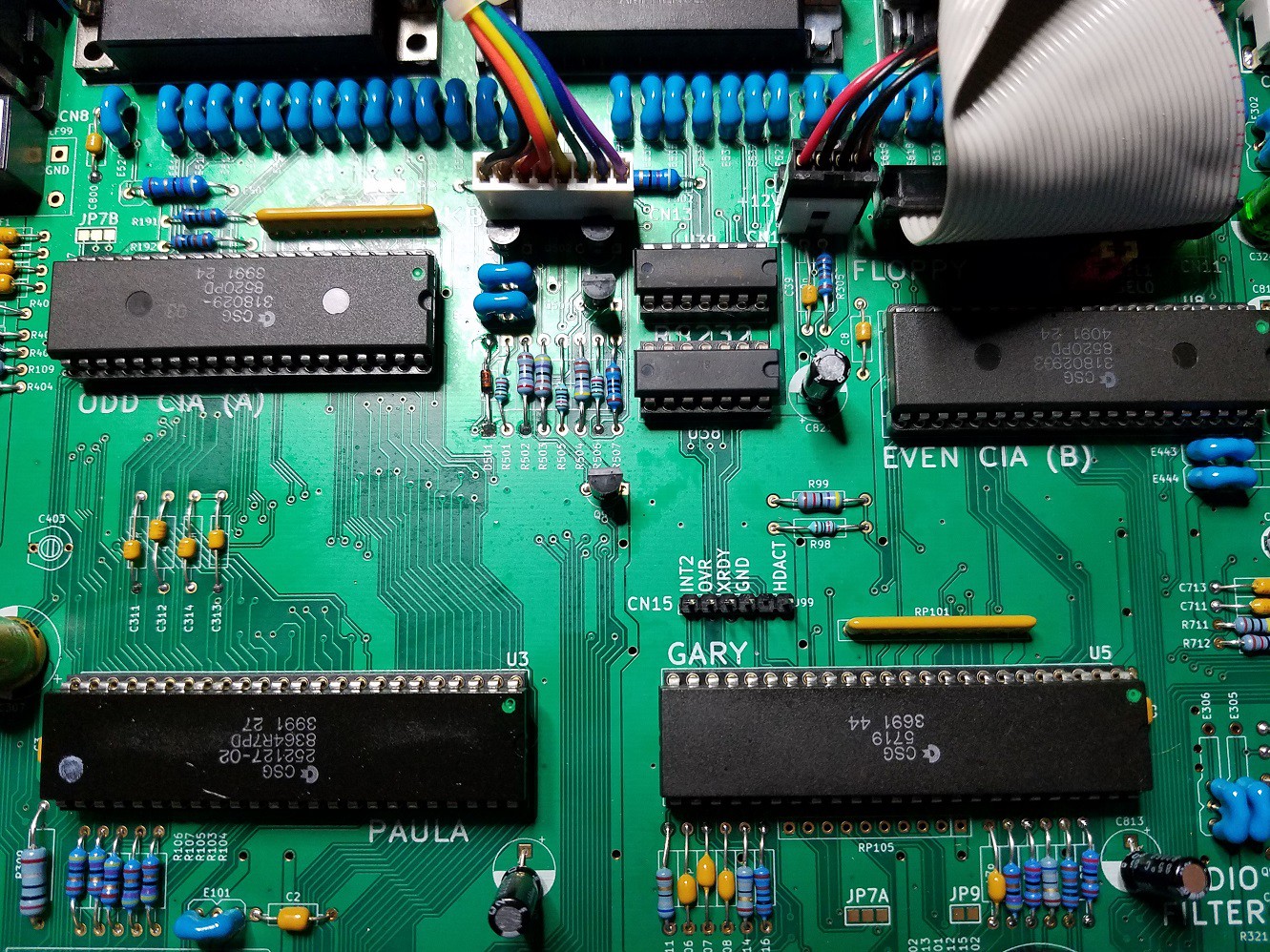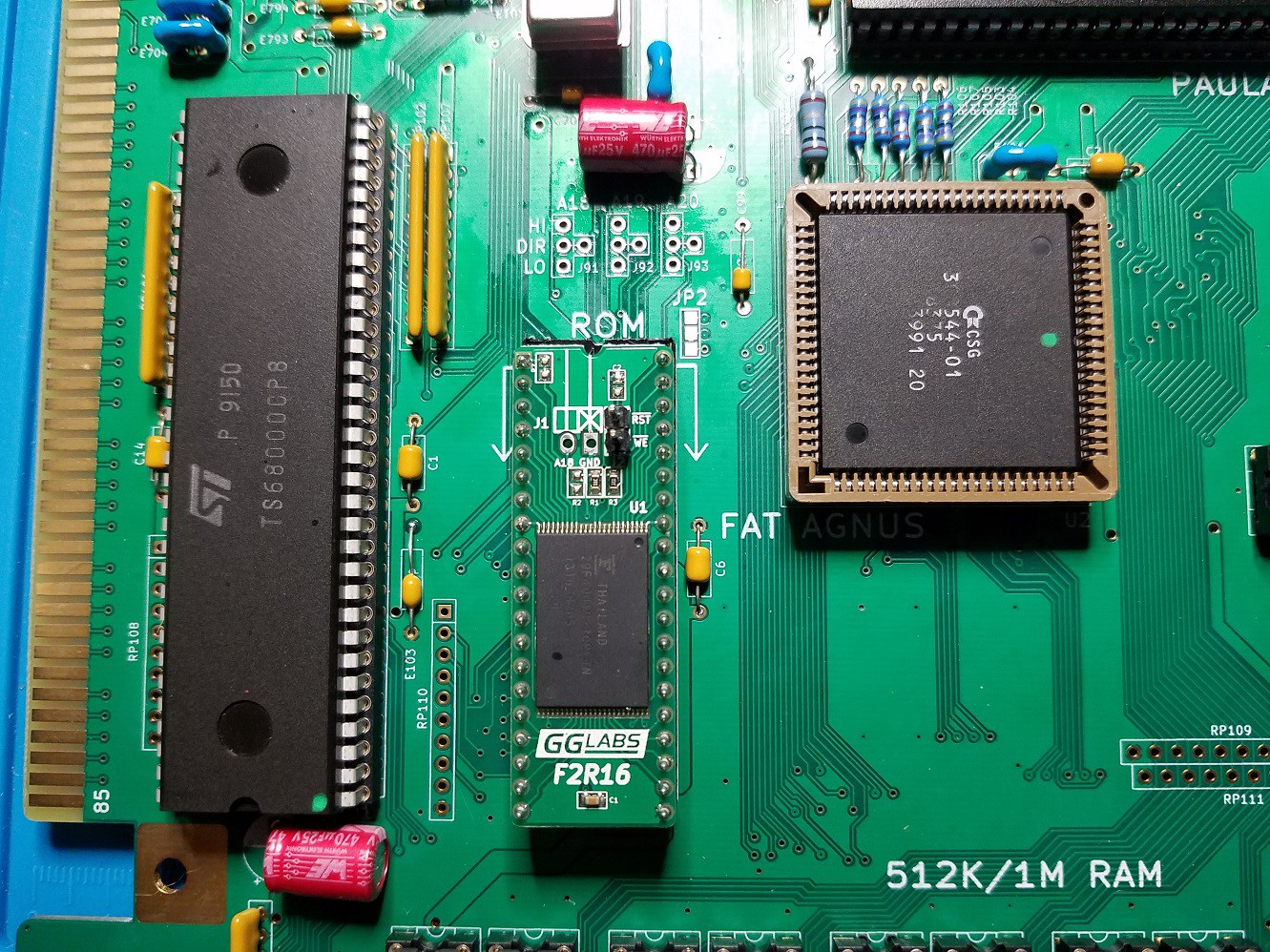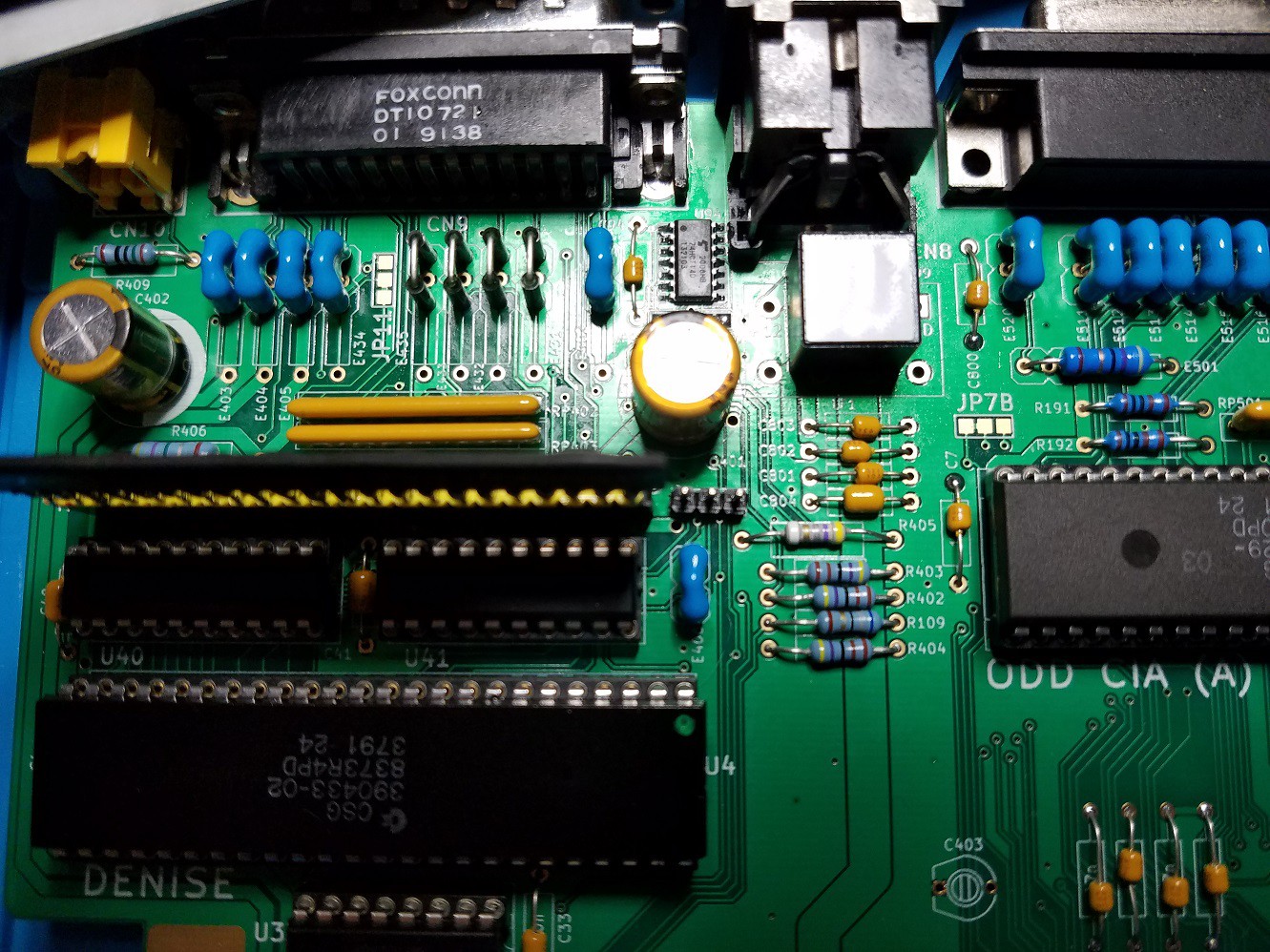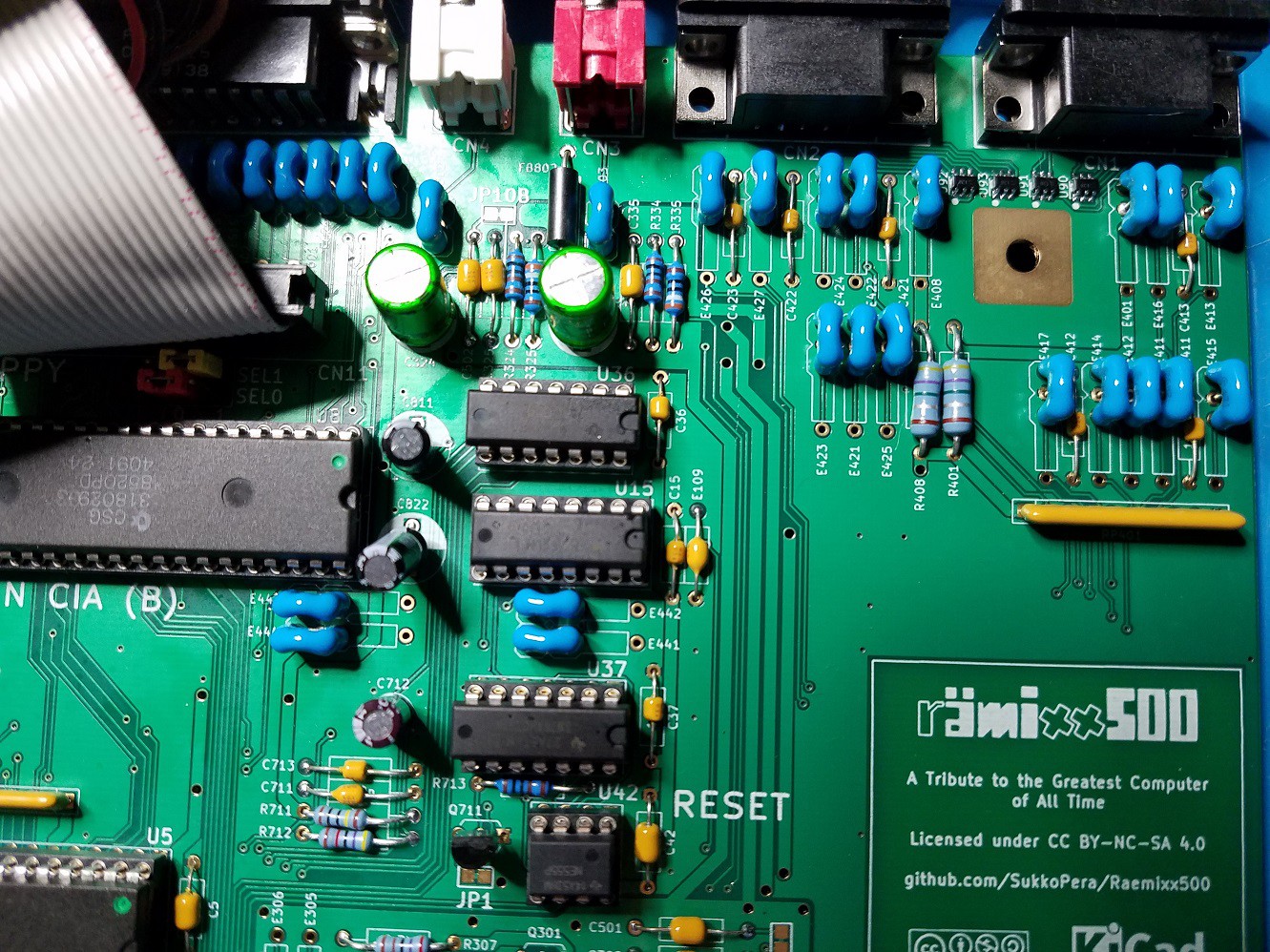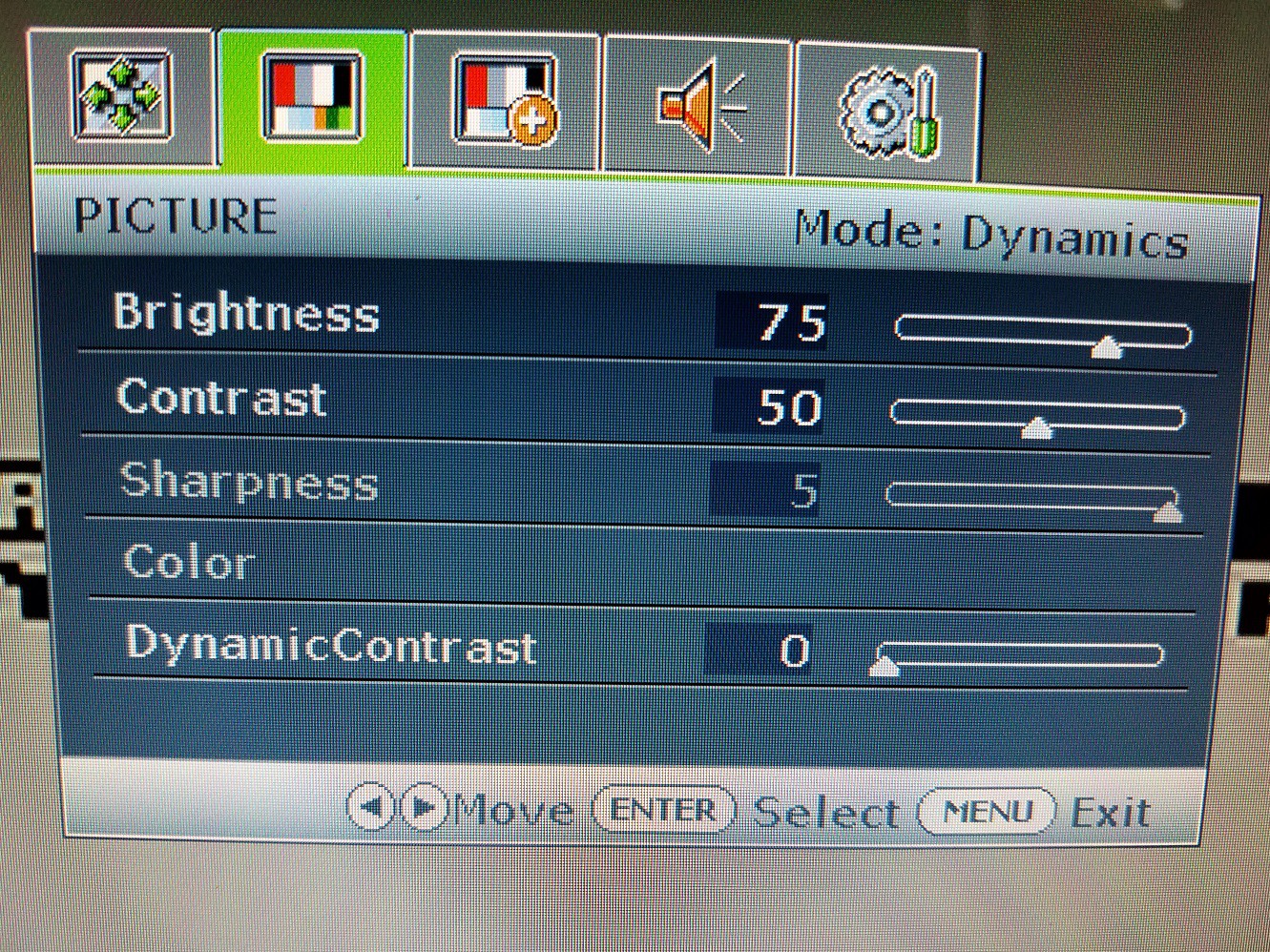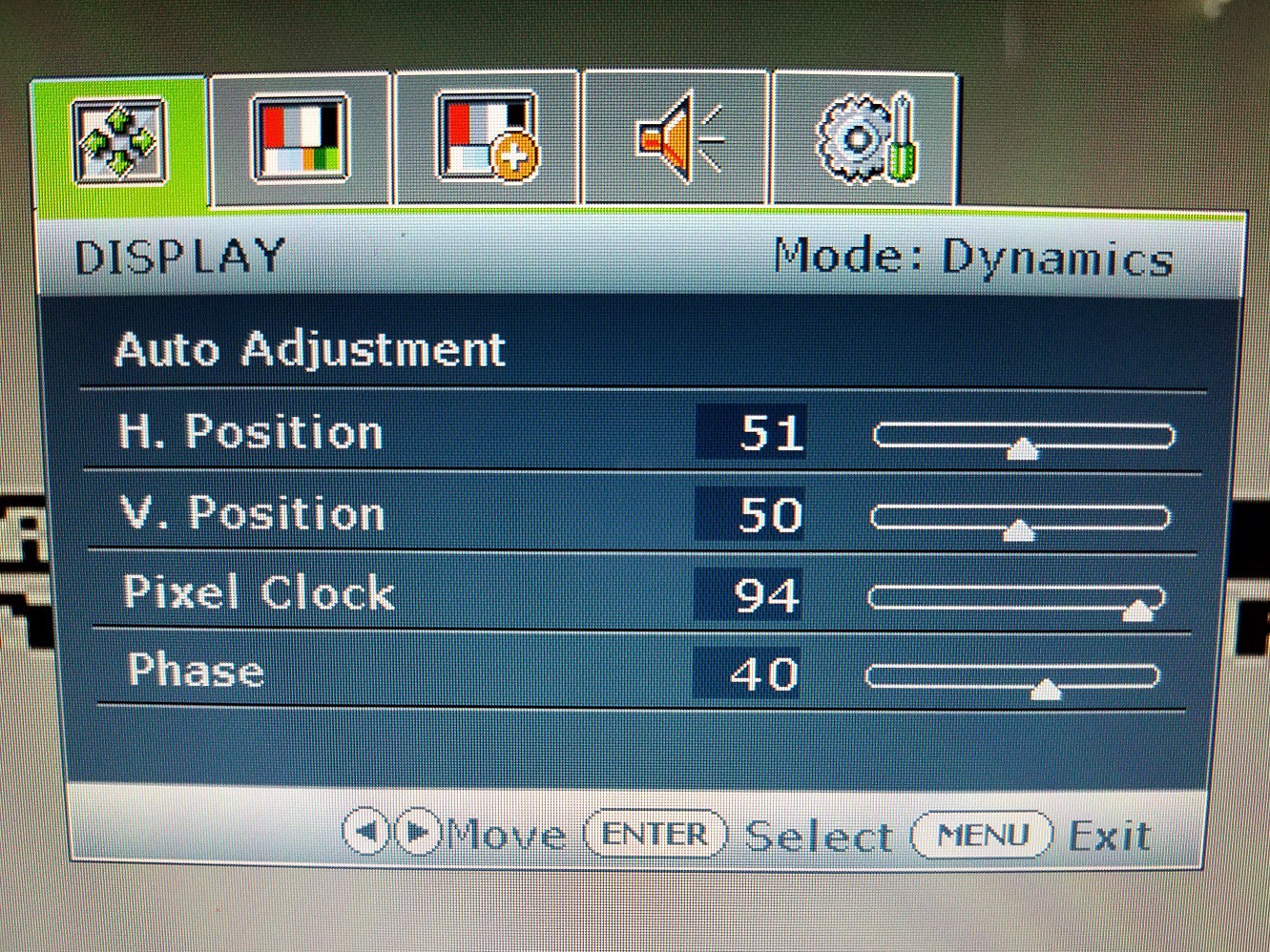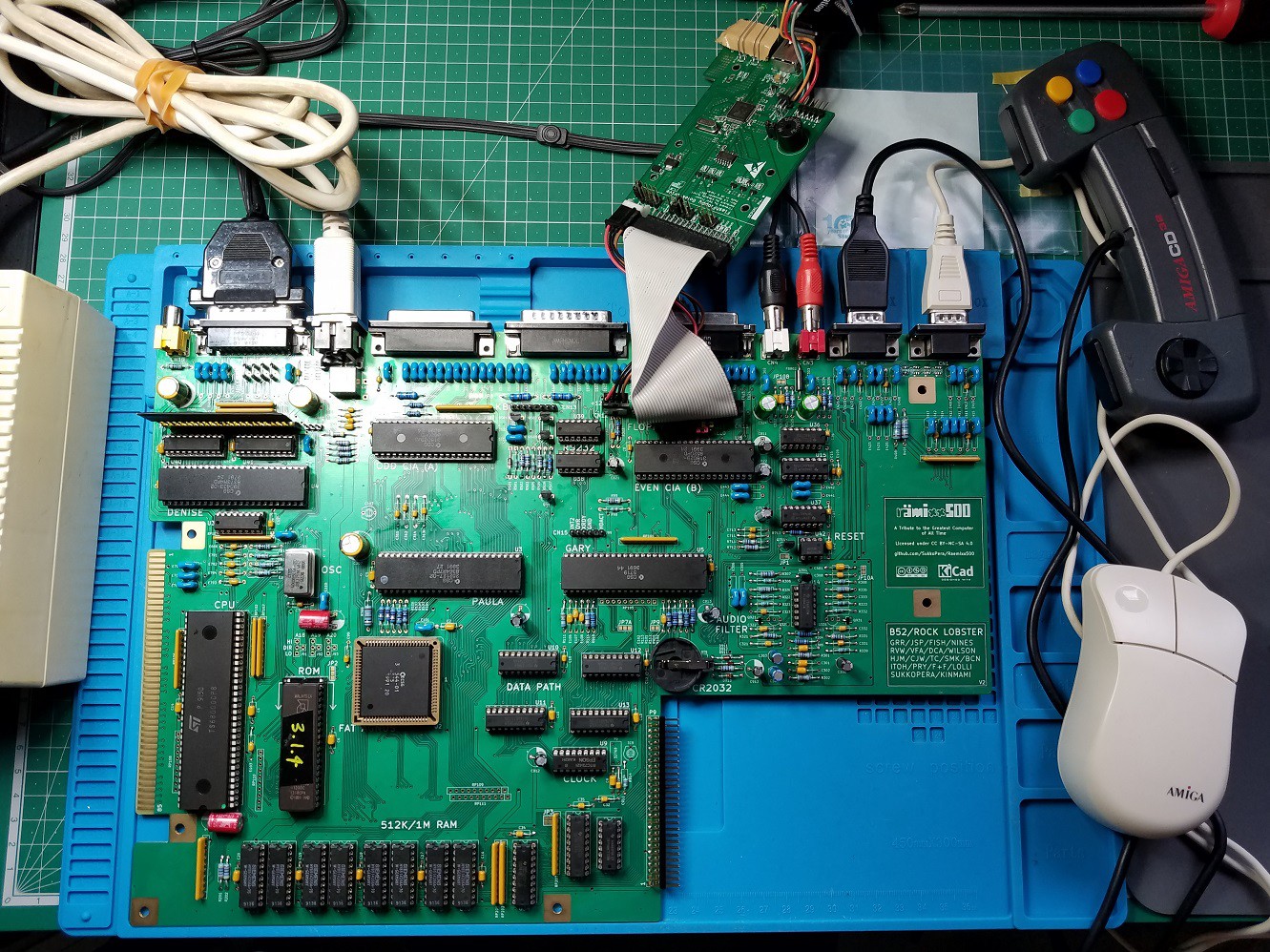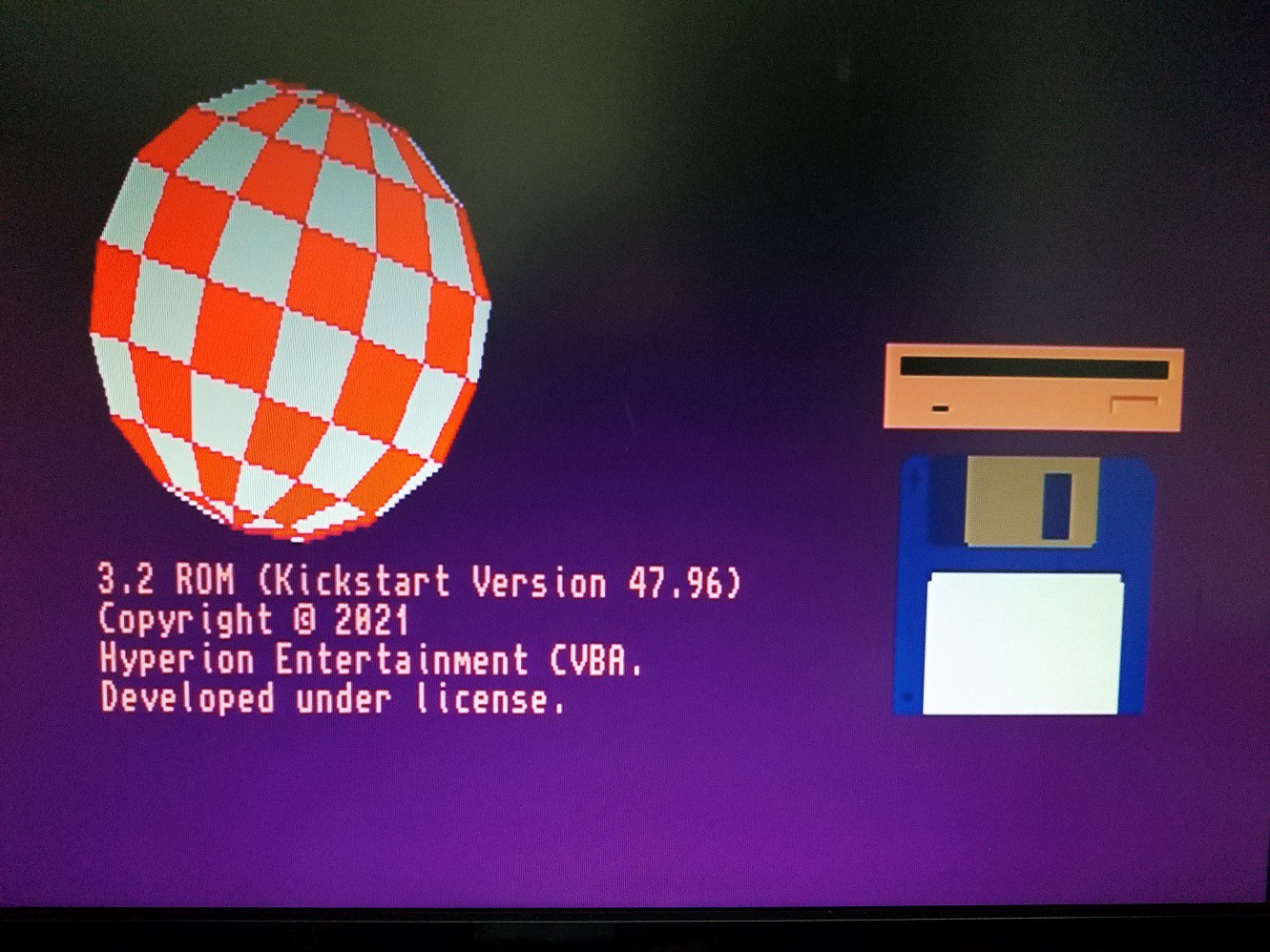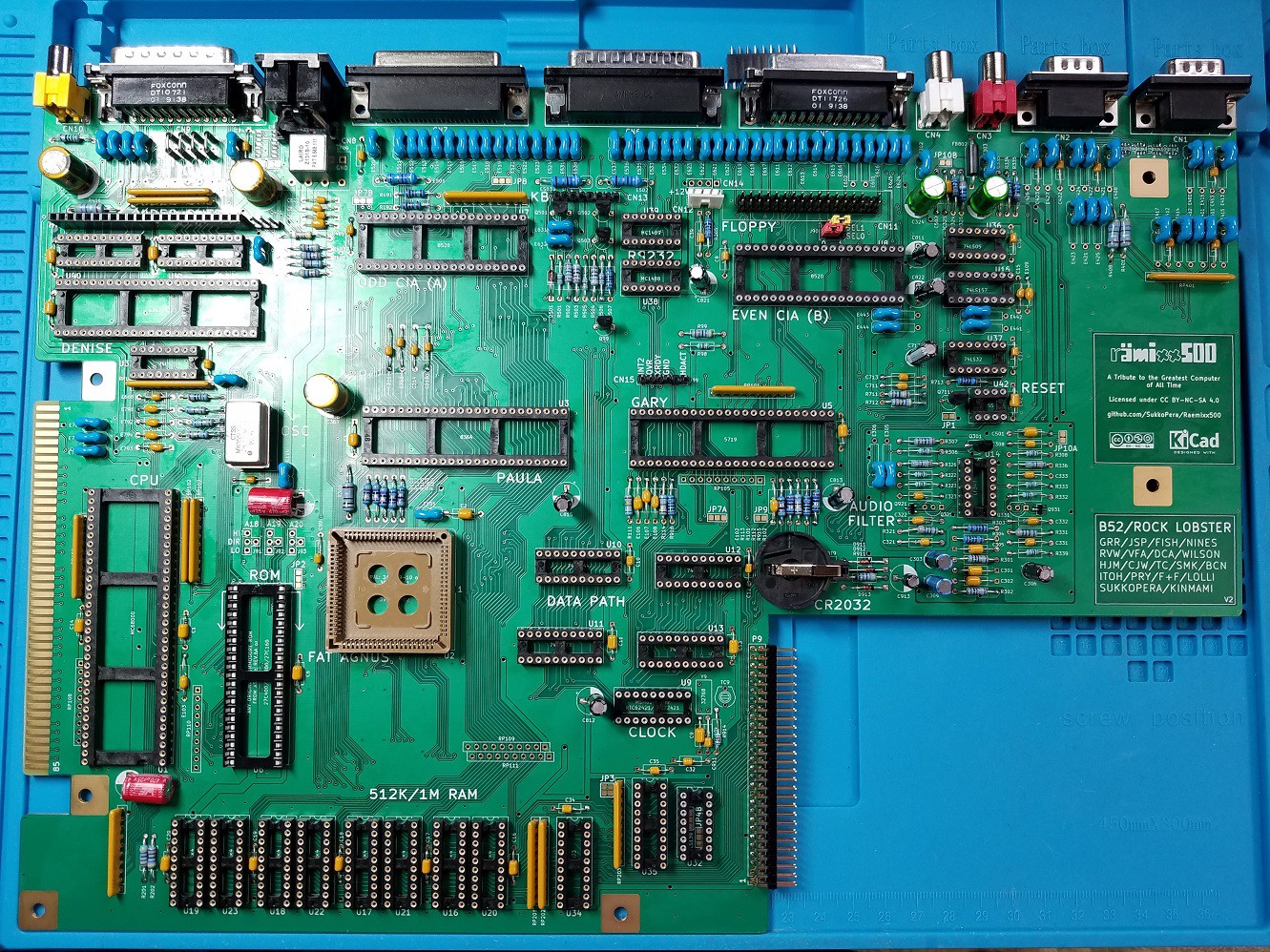-
Understanding & Fixing RGB Noise
07/28/2021 at 02:10 • 0 commentsI have been working to maximize Ramixx500 V2’s analogue RGB video output and interestingly I have found few improvement points that are essential:
- Pin 15 of CN9 so-called _CCK requires 47Ω termination (normally provided by genlock if plugged)
- Alternatively, the following pin can be lifted (disconnected / desoldered) from the motherboard to disable the buffered _CCK line:
- Ramixx500 V2 pin 6 of U41
- A500 Rev. 6, 8A1 (PAL) pin 6 of U41
- A600 Rev. 1.5, 2 (PAL) pin 11 of U32
- A1200 Rev. 1D.1, 2B (PAL) pin 4 of U32
- Each colour line benefits of a L-R bead insertion as bead cuts high-frequency noise.
- A high standard VGA cable increase the noise immunity.
- A decent grounding of the motherboard.
In the Amiga environment the jail bars are probably generated by peak noise induced by a floating _CCK (clock out for the genlock) and empathised by bad quality shielding/grounding at cable ends, regardless the resolution or de-/interlaced PAL/NTSC video modes.
Tested with:
- Amiga Test Kit v1.18
- EA Deluxe Paint III and 4.5 AGA
- BenQ LCD Monitor G2420HD (ET-0027-B) October 2009 Rev. 00-132-BA [VGA]
- UGREEN 11614 VGA Extension Cable [length 6 ft / 183 cm]
- Sony Trinitron CRT Monitor PVM-9045Q [RGB + SYNC]
- RS 790-2805 Straight 75Ω RF Adapter BNC Plug to RCA Sockets [250MHz]
- Mediabridge 70-040-06B Component Video Cable [length 6 ft / 183 cm]
![]()
![]()
(schematic from amigawiki)
![]()
-
Full-color CVBS / S-Video / RGB
07/09/2021 at 12:06 • 1 commentThe new video hybrid “Vidiot” board is based on the AD724 RGB to NTSC/PAL Encoder. It provides sharp and colourful CVBS (composite) and S-Video (Y/C) output signals, in addition to analogue RGB. It is compatible with Ramixx500 V2 and future developments. The board can be mounted either horizontally and vertically (to accommodate RGBtoHDMI or accelerators).
![]()
![]()
S-Video:
![]()
Composite:
![]()
RGB:
![]()
Tested with:
- Amiga Test Kit 1.17
- RGB: BenQ LCD Monitor G2420HD (ET-0027-B) October 2009 Rev. 00-132-BA
- CVBS / S-Video: Sharp LCD TV Aquos LC-22K3
-
Good News From The Next World
07/06/2021 at 08:47 • 0 commentsSince Edoardo has been on a testing spree and the test activities on V2 were completed in a breeze, I think it's about time to shed some light on the improvements that we added in this revision so, without further ado:
- Buffered Video Synchronization Signals: This will make the VSYNC and HSYNC signals going out from the DB23 connector somewhat "stronger", which should improve video quality and also allow using fully passive (i.e.: just wires) RGB to VGA cables (but please note that the signal will still be 15 kHz so a scandoubler will still be required with most VGA monitors).
- ESD Protection for the Joystick Ports: While connecting controllers blindly is still not recommended, you can add some diodes that should hopefully avoid damage to the internal chips whenever you do so.
- Hard Disk LED: If you use an internal expansion board that provides an IDE connector, you will definitely like having the Floppy LED flash whenever your hard disk is accessed.
- Alternative Footprint for the Line Filter: The original line filter was probably a custom part, but in any case it's impossible to find these days. Luckily a functionally-equivalent part is available (Laird Z131B-10) but it has a different footprint, so the latter was added.
- Alternative SMD Footprints for the JFETs: The JFET transistors that toggle the audio filter are a bit hard to find these days in the TO-92 package, so alternative surface-mount SOT-23 footprints were added.
- More Accurate Dimensions: While V1 was already pretty close to the original board, the new version should be right on the money. Placement of the audio and mouse ports was also improved.
- More Detailed Silkscreen: The values of all resistors, capacitors and chips are now printed on the silkscreen, which makes the assembly process quicker and less error-prone.
- Improved Routing and Ground Plane: Some tracks were slightly altered in the hope of achieving improved signal integrity.
Of course these add up to the Support for VBB Agnus, Mono Audio Link, Alternative Power Connector, Kickstart Switcher, Drive Switcher and other minor tweaks that were already introduced in V1.
We hope that you enjoy the show.
-
Marty: “What, what is it hot?” Doc: “It's cold, damn cold.”
07/05/2021 at 10:24 • 0 commentsThe printed circuit board of Ramixx500 offers an improved dissipation. Overall it is about -3°C colder than the original Commodore Rev. 8A.1.
Particularly, we observed improvements across the following surfaces:
- Denise and Video Hybrid circuit
- Paula, CIAs and RS232
A good strategy was to use a solid ground plane under the main heat source, minimizing the thermal resistance and maximizing the heat dissipation. Consequently, we have avoided fragmented ground planes on both layers and eventually we have considered narrowed power tracks.
Thermal cycle:
OFF > Cooldown 120 minutes > ON > Warm-up (kickstart screen) 30 minutes > Load condition (ECS game) 55 minutes > Screen capturing 5 minutes > OFF
The whole PCB
Left: Ramixx500 V2, Right: Original A500 Rev 8A.1
CPU and FAT Agnus
Left: Ramixx500 V2, Right: Original A500 Rev 8A.1
Denise and HY
Left: Ramixx500 V2, Right: Original A500 Rev 8A.1
Paula, CIA and RS232
Left: Ramixx500 V2, Right: Original A500 Rev 8A.1
Gary and Audio section
Left: Ramixx500 V2, Right: Original A500 Rev 8A.1
RAM chips
Left: Ramixx500 V2, Right: Original A500 Rev 8A.1
Condition:
- Still air room temperature, natural convention
- No RF shields mounted, underneath thermal insulation
- Ramixx500 V2 has all 74LSxx replaced by 74HCTxx
- A500 Rev 8A.1 has original logics
Equipment:
- FLUKE TiS45 Thermal Imager (160x120 Resolution, 30Hz Infrared Camera)
-
Doc: "It works, ha ha ha ha, it works. I finally invent something that works." Marty: "Bet your ass it works."
07/03/2021 at 08:02 • 0 commentsThe characterization test aimed to describe (characterize) the actual behaviour of the existing piece of hardware. The following verification of Ramixx500 V2 was executed:
- Internal Chip RAM (1 MB)
- Composite and RGB video outputs (with and w/o digital buffer for H- and V- sync)
- Stereo Audio output
- Trapdoor 0.5MB and 1MB Chip RAM expansion
- Keyboard and LEDs (plus onboard IDE activity function)
- RTC (onboard and on trapdoor)
- Parallel port
- Serial port
- Zorro slot (accelerator card HC508cr)
- Kickstart 3.1.4 and 3.2
- Internal and external floppy drives (mechanical and FlashFloppy)
- Integrated drive switcher
- Controller ports with Mouse/Joystick/CD32 Gamepad/Analog Paddles
- TF536 basic testing
- Vampire 500 V2+ basic testing
- 12h burn-in test with Vampire 500 V2+
- Raspberry Pi 0-based RGBtoHDMI adapter
- Original shielding/case fit
Conclusions
To conclude, the major contributions of this work are as follows:
The presented power-aware design and test methodology provide an insight into the impact of within silicon and within PCB layout variation. Information regarding CAD versus silicon correlation derived from the test results helps to efficiently optimize CAD models.
A test circuit for accurate characterization of delays in clock and data paths for evaluating the extra timing margin available in silicon has been considered. Understanding the sources of extra margin aids in precisely establishing de-rate added during sign-off that fail-free operation can be ensured while deriving maximum performance from a given circuit.
Future Works
Based on the lessons learnt concerning layout design and chip tests for electrical and thermal characterization, in the future, we may consider implementing a comprehensive reliability/performance management strategy. Further increase in energy savings can be achieved by replacing Fast Page DRAM (440mW @ 5V per unit, in total 3.52W for 1MB) with SRAM (1W @ 5V in total), for example. Moreover, we have overcame known mistakes and limitations hence ensuring the original concept of "Rock Lobster".
References:
Benchmark / Diagnostic:
- Amiga Test Kit 1.17
- SysInfo 4.4
- Diagrom 1.2.1
Expansion & Accessories:
- Vampire 500 V2 [GOLD2.12] (17.03.2020)
- Terrible Fire TF536 (Rev.2b 2019)
- HC508cr (MK II)
- Original Commodore Amiga 500Plus Motherboard Rev8A.1 and plastic case
- RGBtoHDMI (20210529_777ea4f Release)
- Commodore Amiga 1010 external floppy disk drive
- Internal 3.5" floppy disk drive CHINON FB-354 Rev.E (1991)
- Internal 3.5" floppy disk drive PANASONIC-MATSUSHITA JU-253-033P (1991)
- (Gotek) FlashFLoppy Drive Rev.1.1 (Nov 2017) + FlashFloppy firmware 3.27
Power Supply Unit:
- XP Power ECP40UT01 (40W, 5V/7.8A, 12V/2.6A, -12V/0.5A)
Tools & Equipment:
- Weller WES51 Iron soldering station
- W.E.R. 858D SMD rework station
- Oscilloscope Tektronix TBS1052C
- BenQ LCD Monitor G2420HD (ET-0027-B) October 2009 Rev. 00-132-BA [HDMI/VGA]
- Sharp LCD TV Aquos LC-22K3 [HDMI/VGA/CVBS]
- Logicool Stereo Speakers Z120
Chipset:
- CPU: ST TS68000CP8
- ROM: 29F400TC-70PFTN / AM27C400-105DC
- FAT AGNUS: CSG 8375 390544-01 (PAL)
- PAULA: CSG 8364R7PD
- GARY: CSG 5719
- CIA: CSG 8520PD
- DENISE: CSG 8373R4PD + hybrid video circuit Commodore 390229-03
- RAM: SIEMENS HYB514256A-70 (70ns) / Trapdoor exp. ELITEMT M11B416256A (25ns)
- AUDIO: TL084CN (RC filter and cutoff frequency as per standard A500 Rev8A.1 schematic)
- KEYBOARD: MOS 6570-036
- Logics: all 74LSxx replaced by 74HCTxx
Operating System:
- Hyperion AmigaOS 3.1.4
- Hyperion AmigaOS 3.2
- Hyperion Kickstart 3.1.4 and 3.2
Storage:
- 3.5" Floppy discs MAXELL MF2-DD (2020) [DF0: / DF1:]
- SanDisk Extreme Pro USB 3.0 128GB [DF0: / DF1:]
- CompactFlash SanDisk Ultra 8GB / Transcend 1GB 133x [DH0: / DH1:]
Condition:
- Still air room temperature, natural convention
- Min / Max temperature 24.3° / 27.7° Celsius
- Min / Max humidity 54% / 78% Air pressure 1009 millibars
- Nominal AC voltage 100V / 50Hz (Tokyo, Eastern Japan)
![]()
![]()
![]()
-
GamesMaster
07/02/2021 at 16:18 • 0 commentsHaving passed the memory test, I thought it was time to play games!
However, OLT second phase is about to start...
![]()
![]()
![]()
![]()
![]()
![]()
![]()
-
"No wonder this circuit failed, it says “made in Japan.” What are you talking about, Doc? All the best stuff is made in Japan."
07/02/2021 at 11:58 • 0 commentsThe first part of OLT is giving positive results.
![]()
![]()
![]()
![]()
![]()
![]()
![]()
![]()
![]()
![]()
![]()
![]()
![]()
![]()
![]()
![]()
![]()
![]()
![]()
![]()
![]()
![]()
![]()
![]()
![]()
![]()
![]()
-
"Test your might!... Flawless Victory"
06/28/2021 at 05:27 • 0 commentsAssuming you can connect your Rämixx500 directly to an LCD monitor capable of analogue 15KHz sync (no scan doubler/flicker fixer), please mind setting the accurate Pixel Clock (value 90 to 95) and Phase (value 40 to 45).
A very different value selection may cause visible vertical jail bars. In other words, do not use the AUTO setting. In addition, your monitor may require H- and V- SYNC buffered.
If you notice a vertical noise (like a curtain effect-shimmering of vertical lines), Pixel Clock Adjusts the pixel clock frequency timing to synchronize with the analogue input video signal until the noise disappears.
Phase Adjusts the pixel clock phase timing to synchronize with the analogue input video signal until the noise disappears.
If you have installed the RGBtoHDMI Raspberry Pi adaptor, please be informed that Pixel Clock and Phase are not applicable to a digital input signal.
The recommended values, selected after the benchmark between the original 8.1 and Rämixx500 motherboards, are the following (BenQ G2420HD model):
![]()
![]()
-
"Iggy! She's twitching!"
06/28/2021 at 00:59 • 0 commentsThe Operating Life Test (OLT) is running...
![]()
![]()
![]()
-
There's more to this than meets the eye
06/27/2021 at 04:48 • 0 commentsThe basic manual assy is finished. Now it is time for visual inspection and ensures correct polarity and no cold joints.
The good thing is that all supply voltages are stable and within spec. The oscillator outputs a nice square signal of 28.37MHz.
Next step: ICs installation and smoke test.
![]()
Rämixx500 - Amiga 500+ Mainboard
Open Hardware Remake of this Commodore Masterpiece
 SukkoPera
SukkoPera